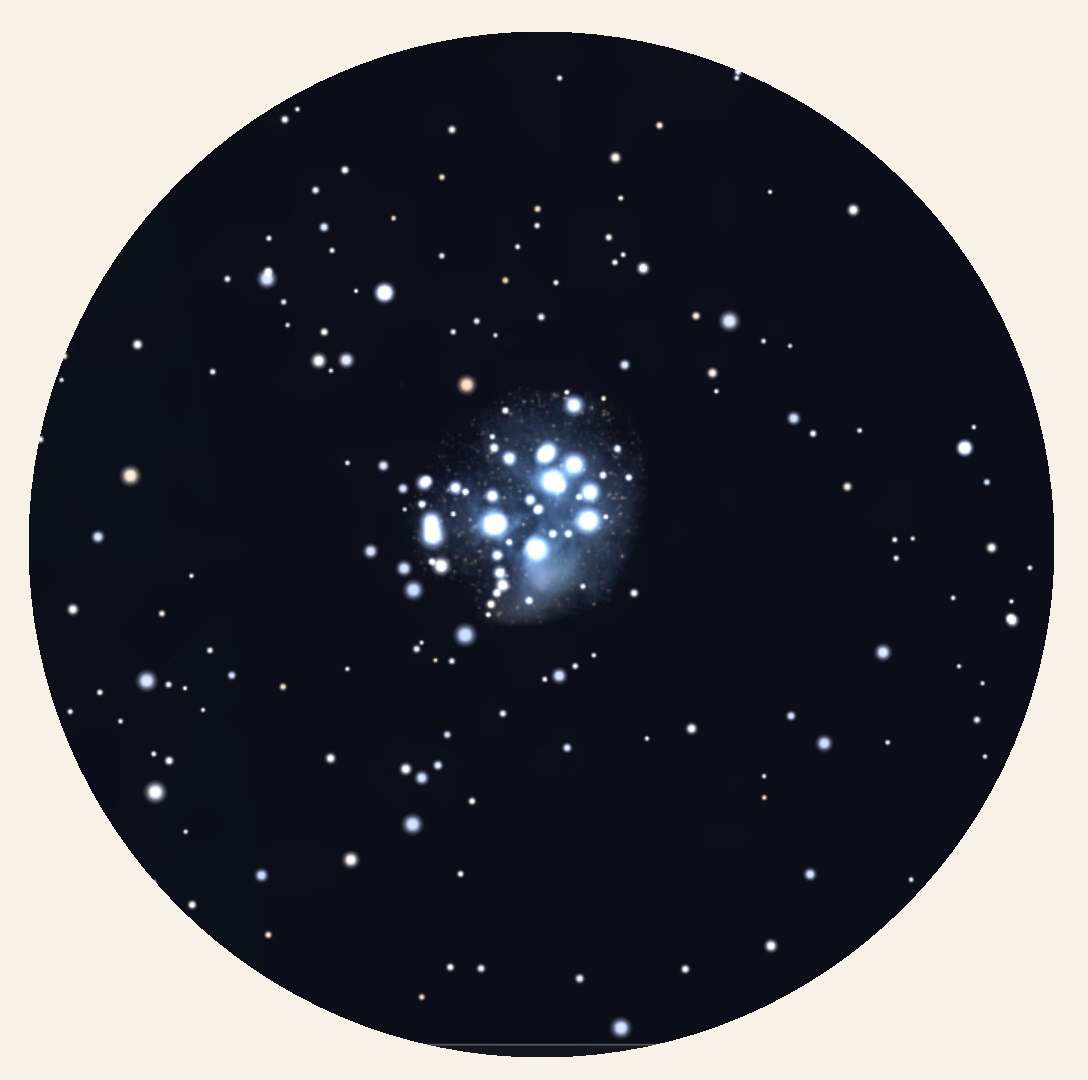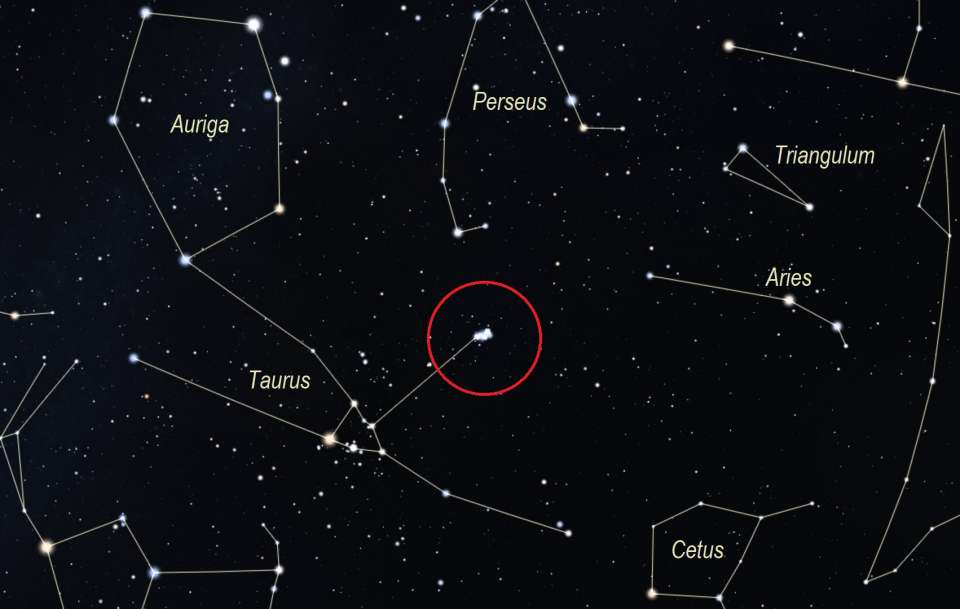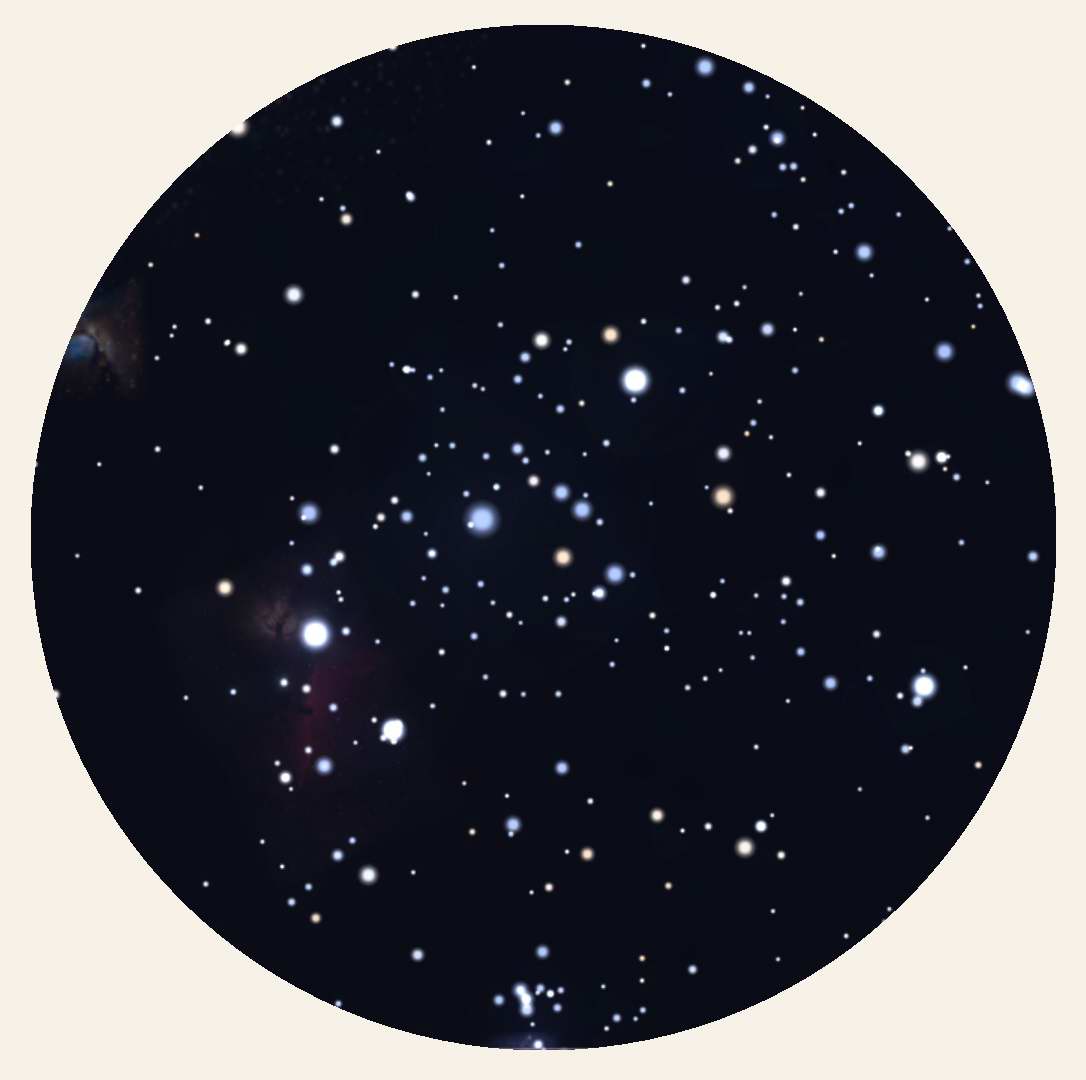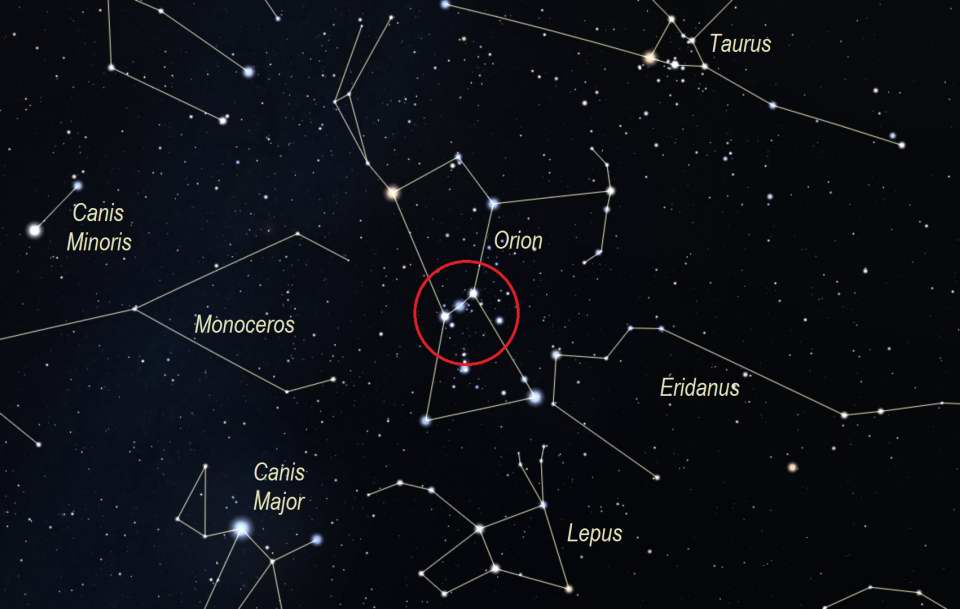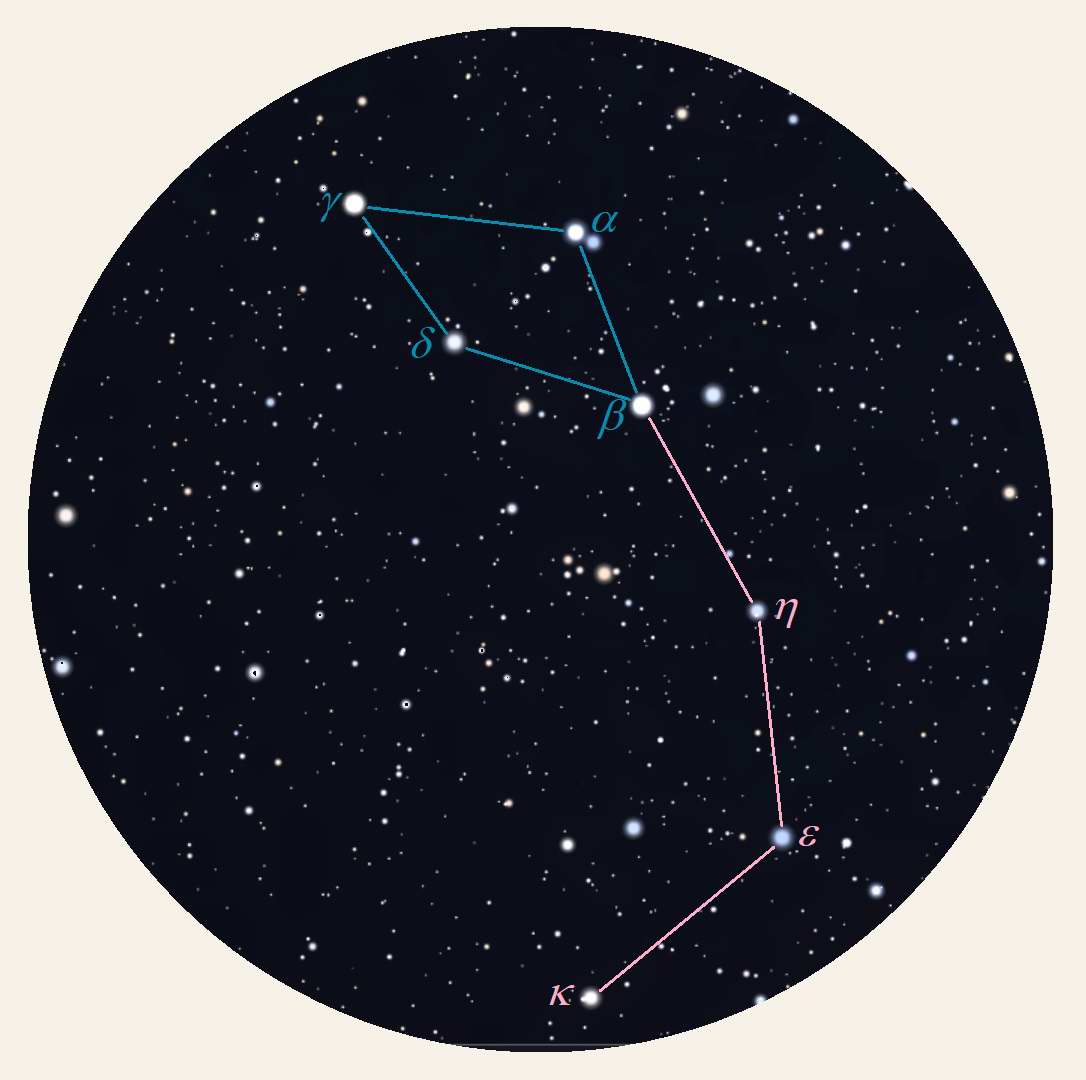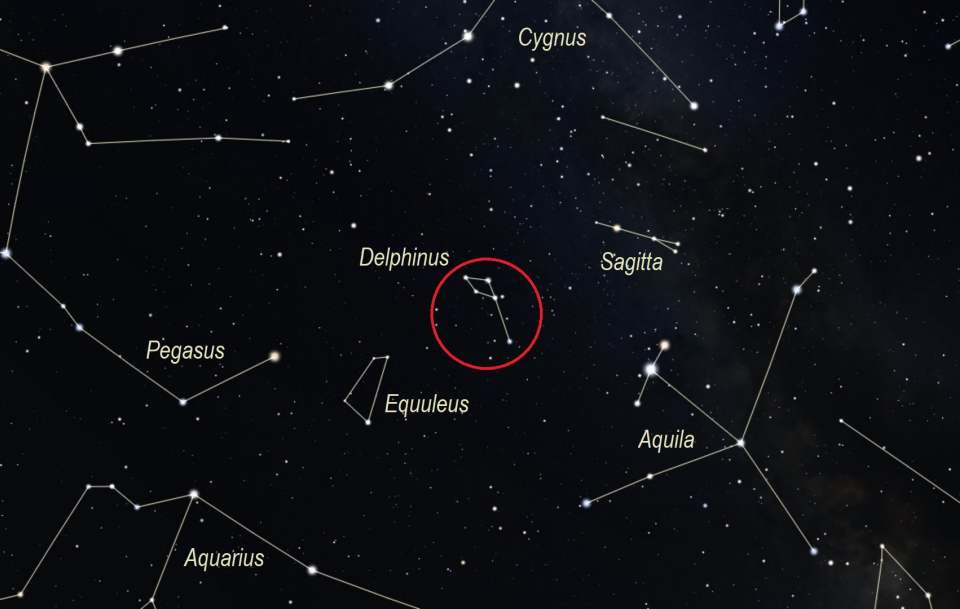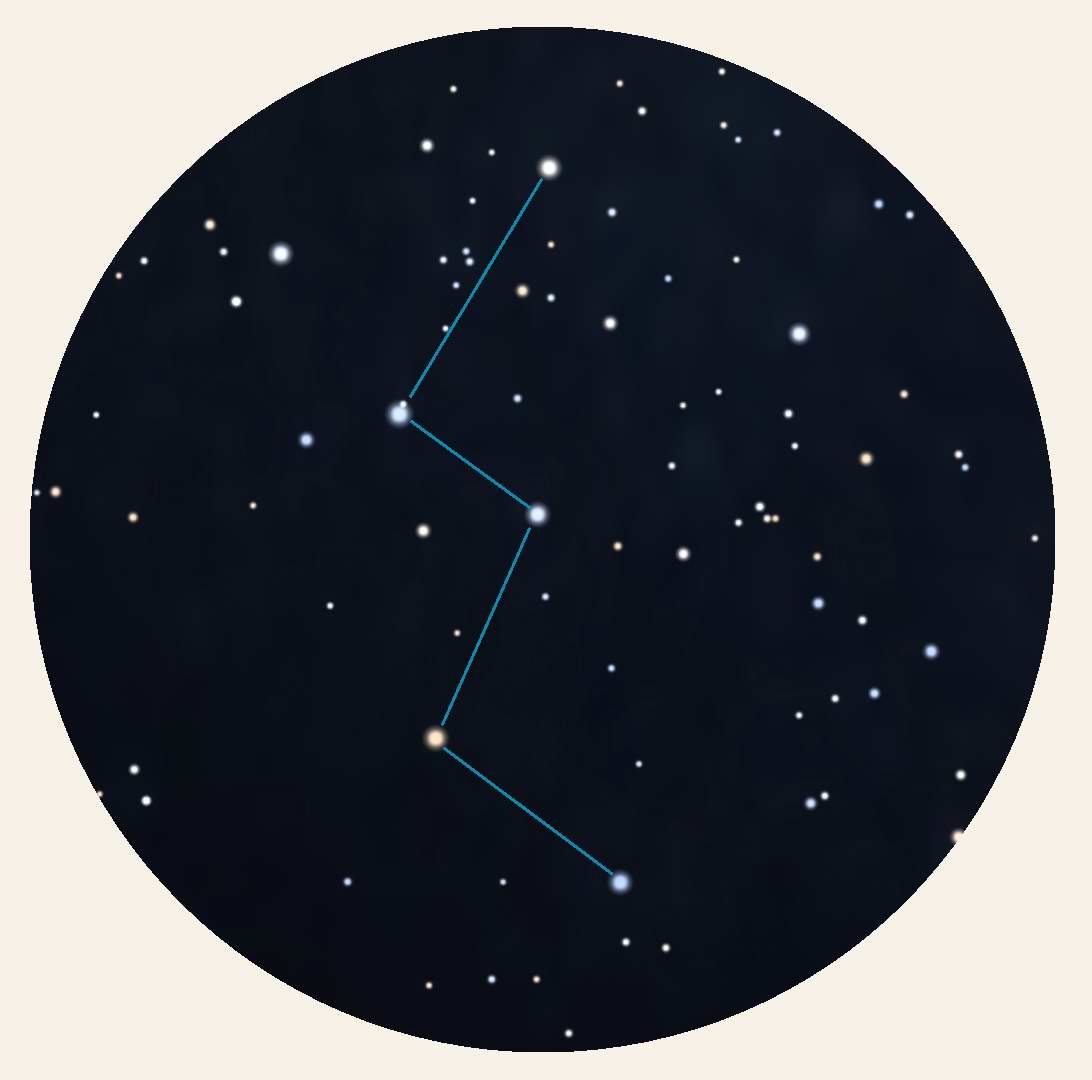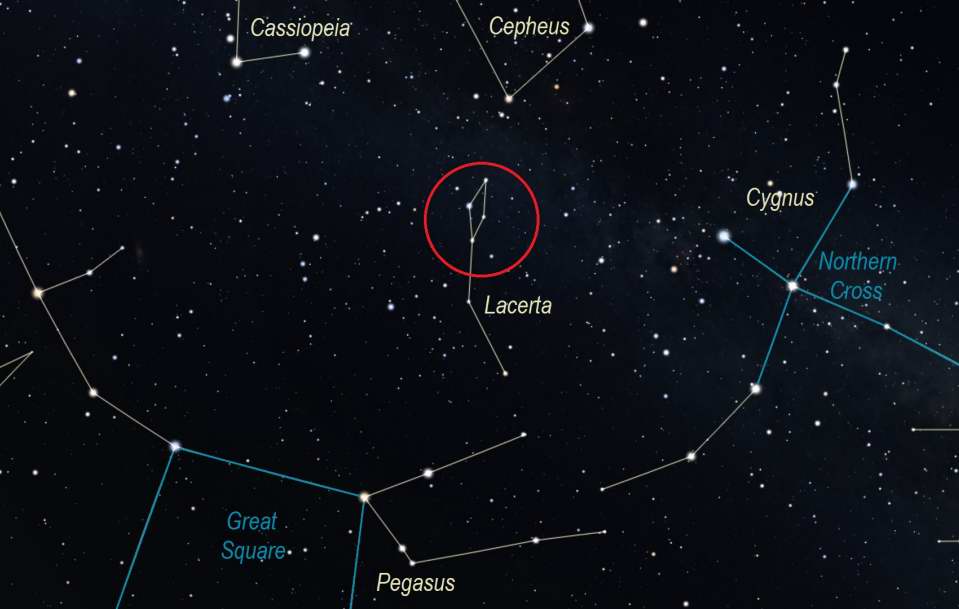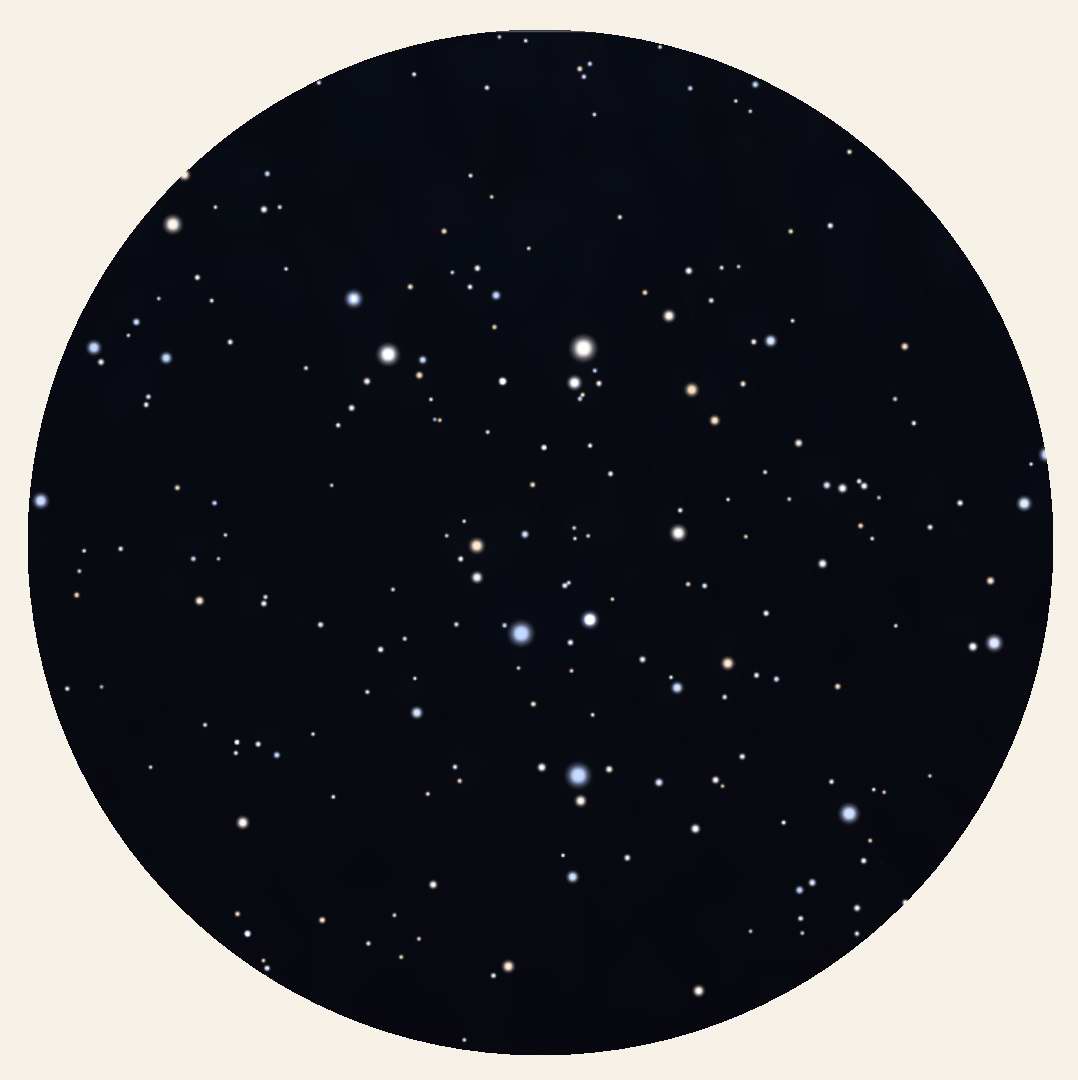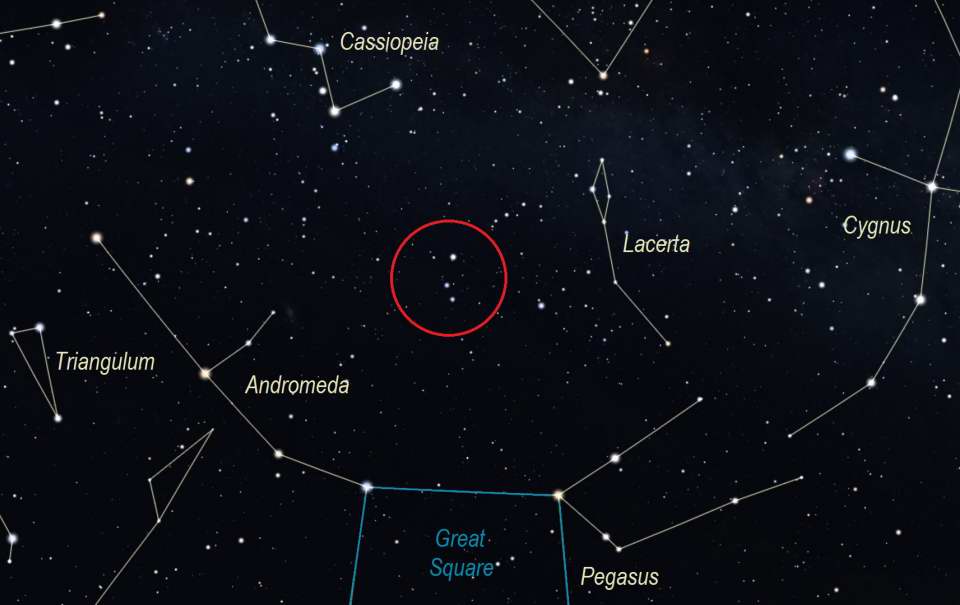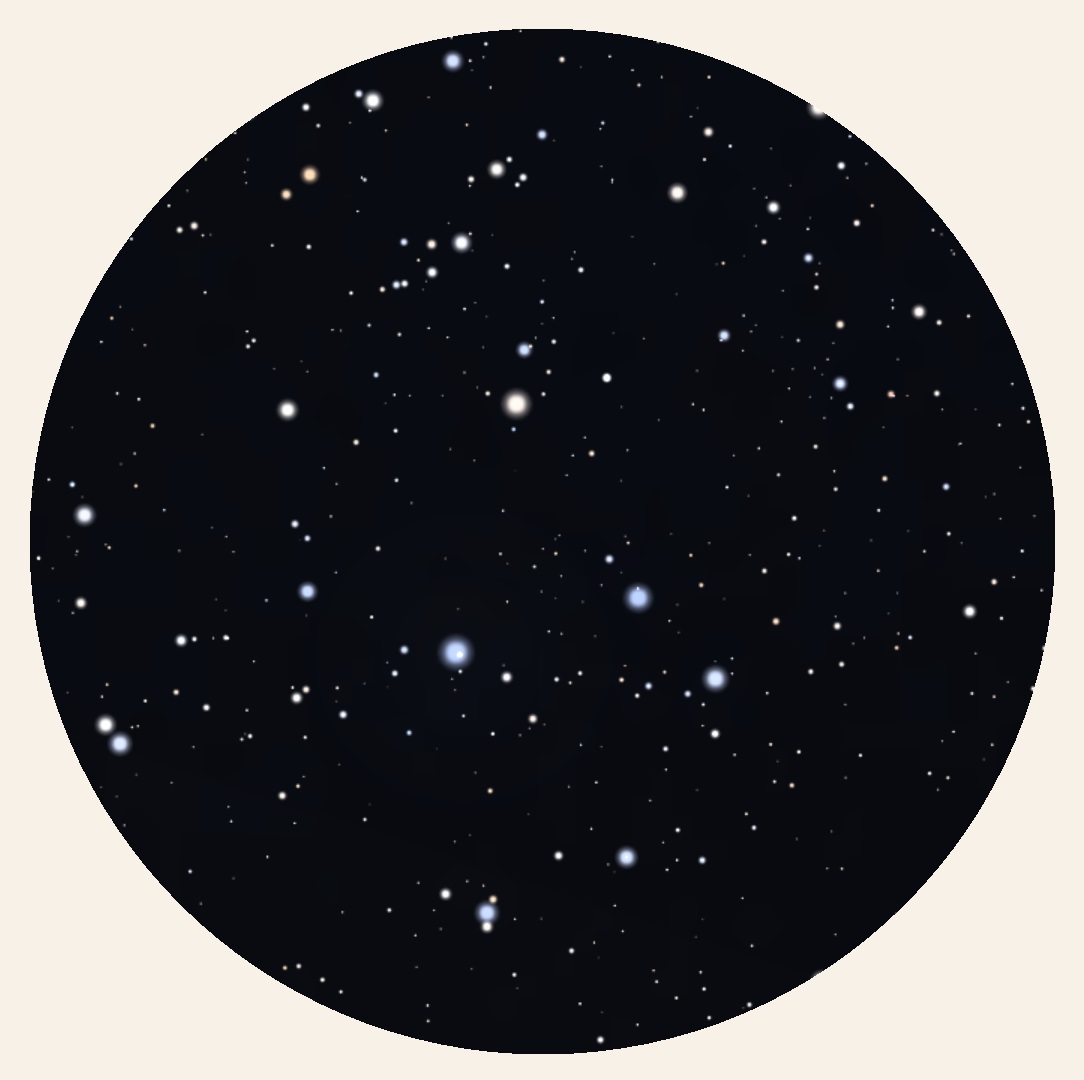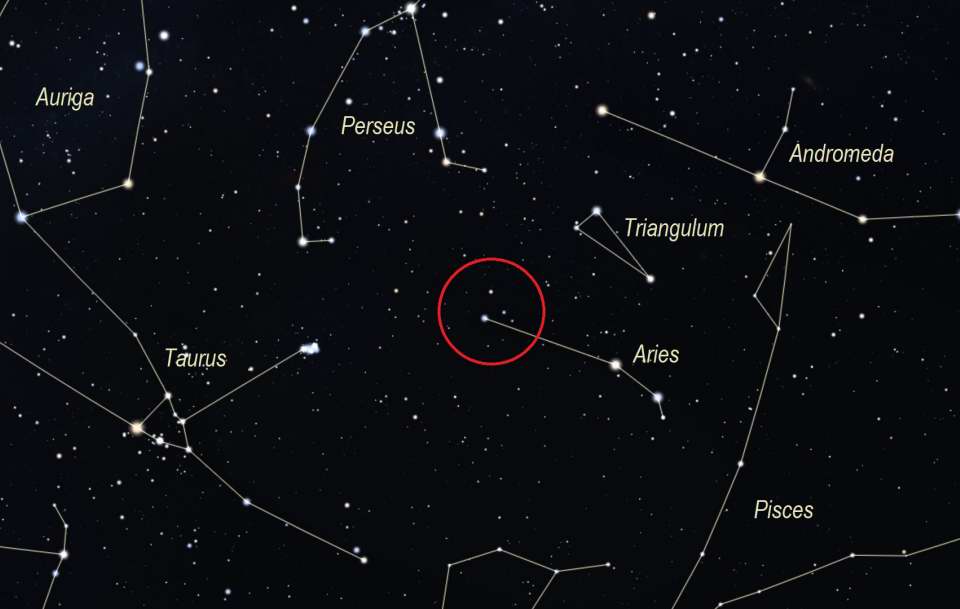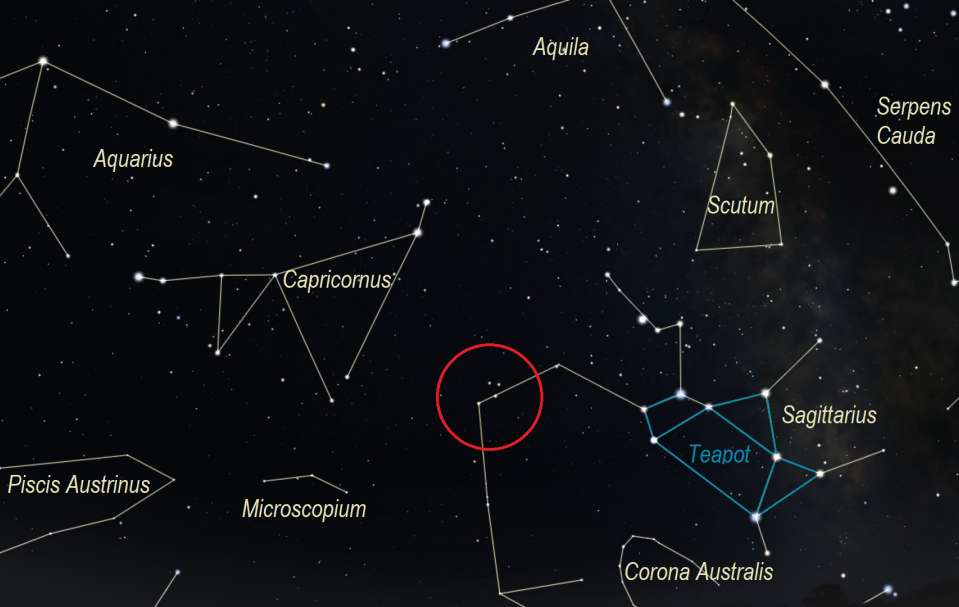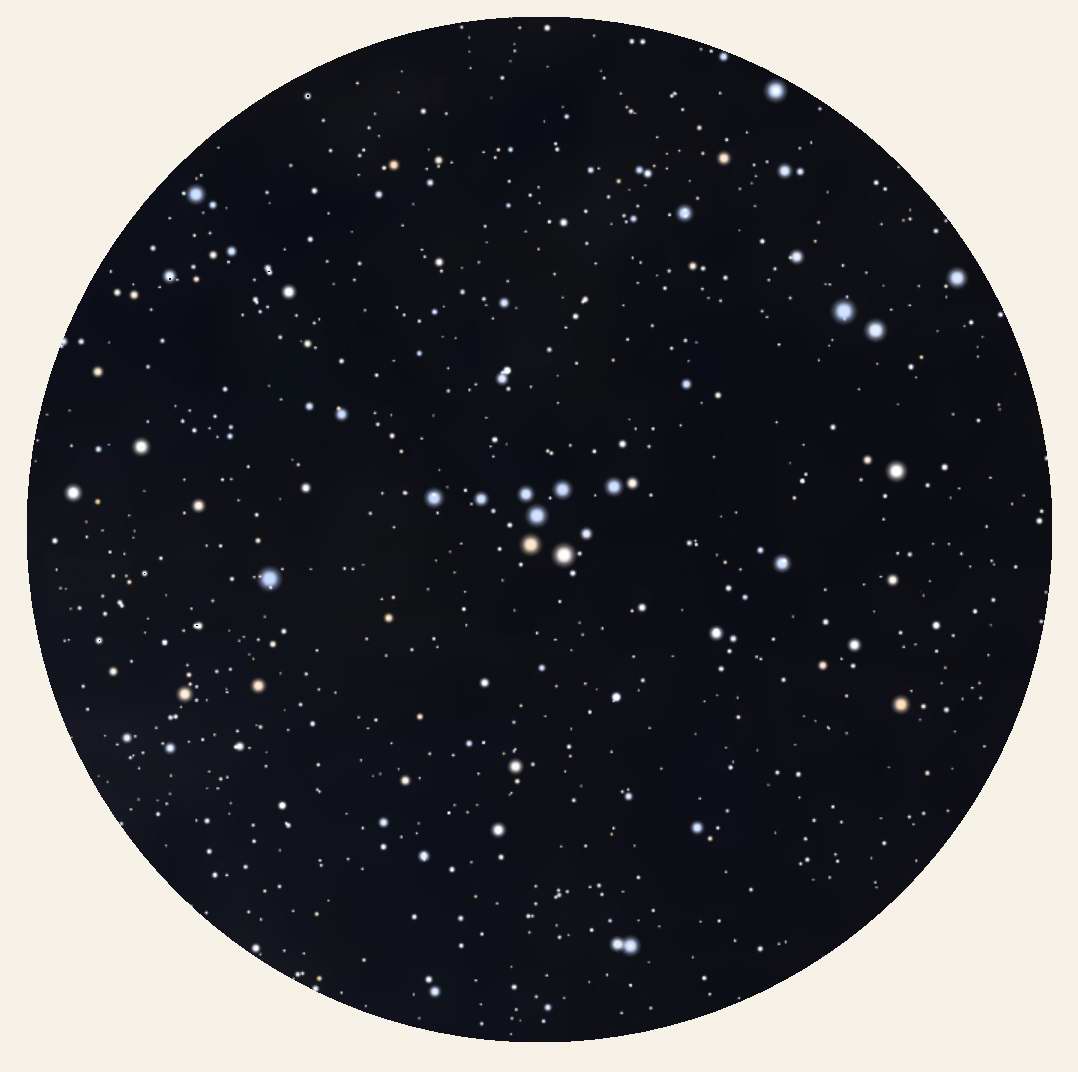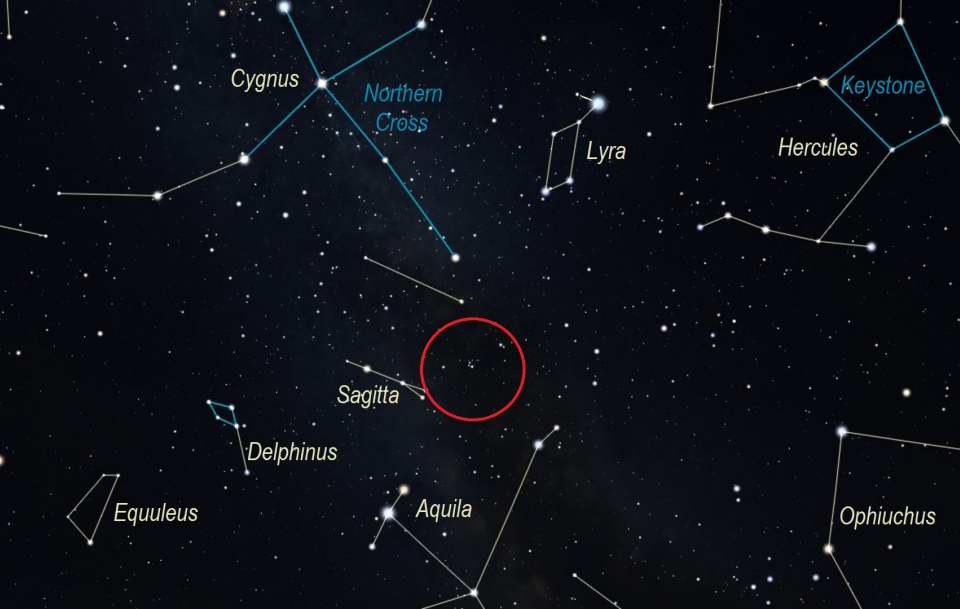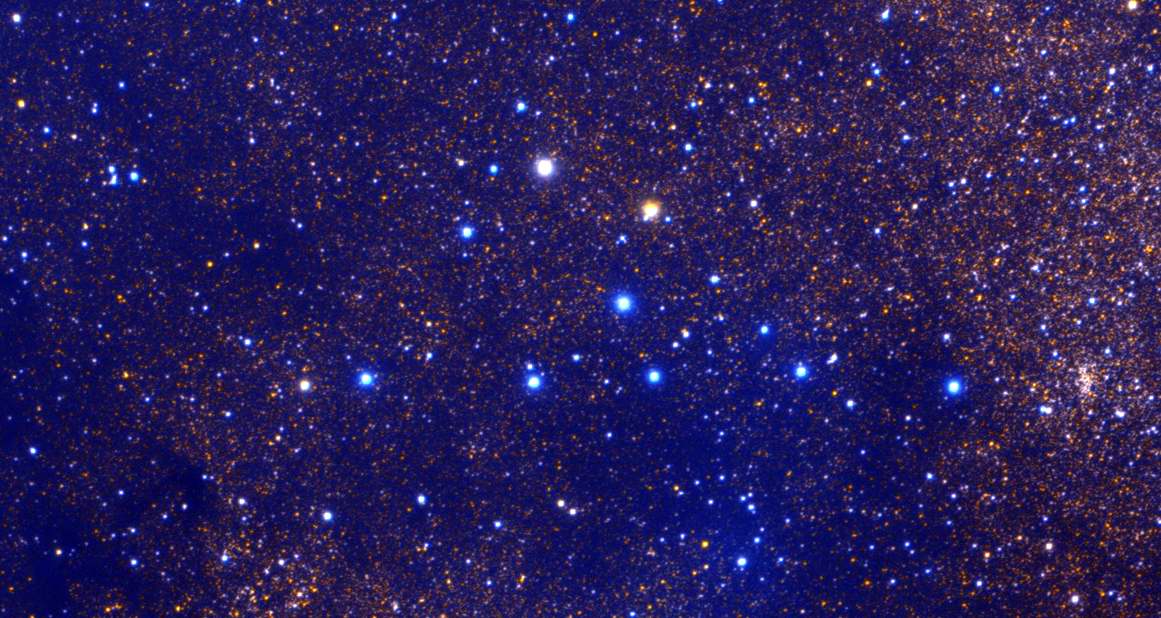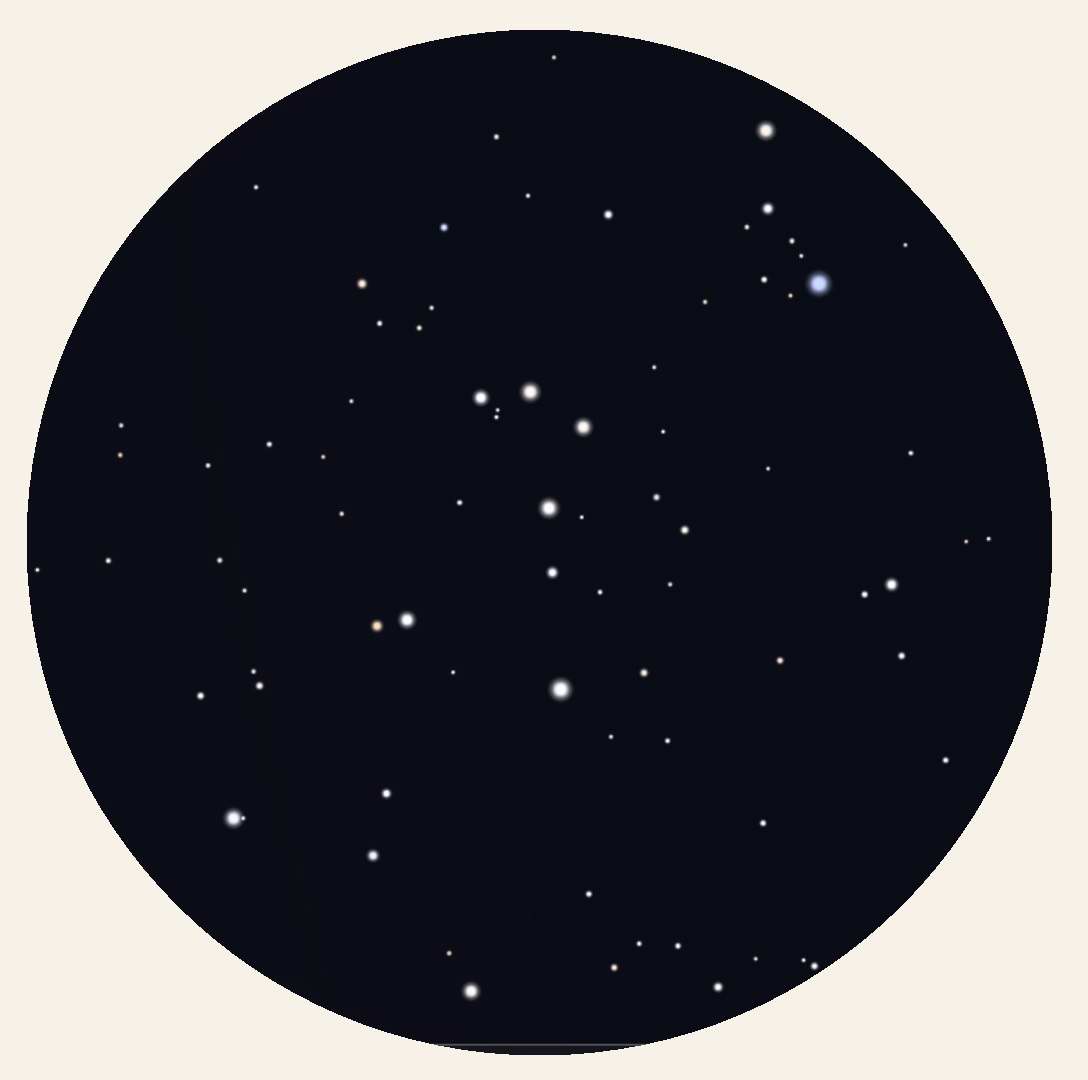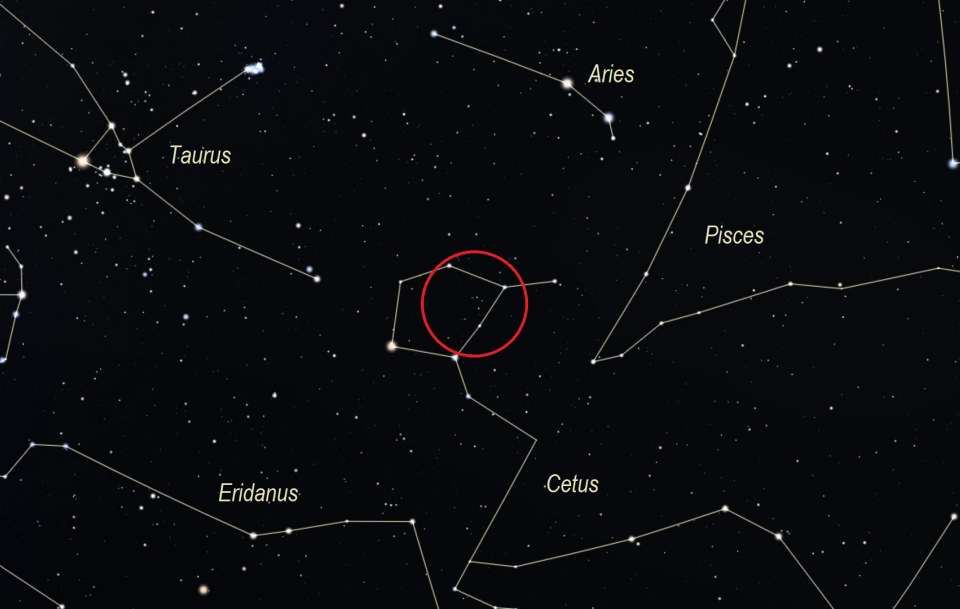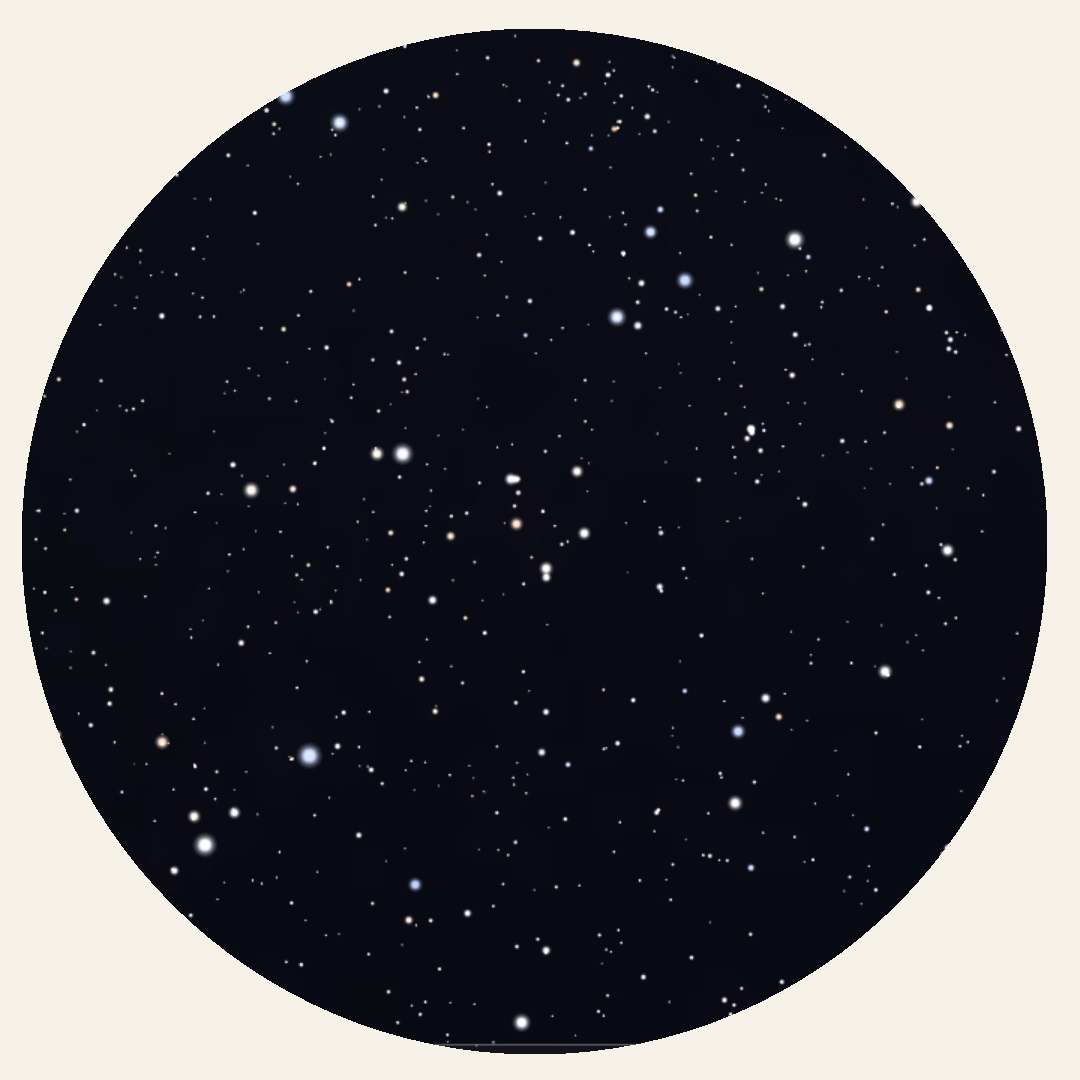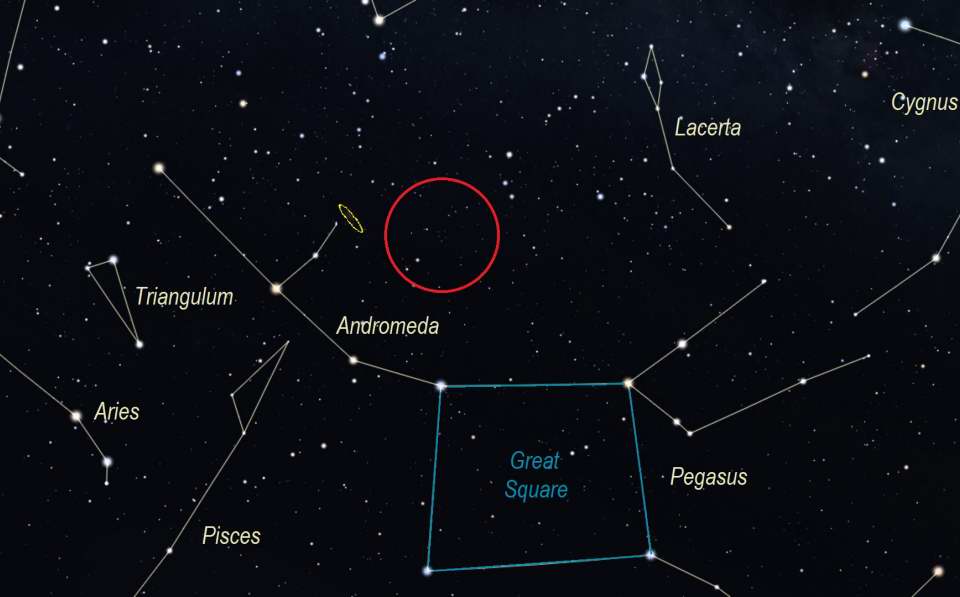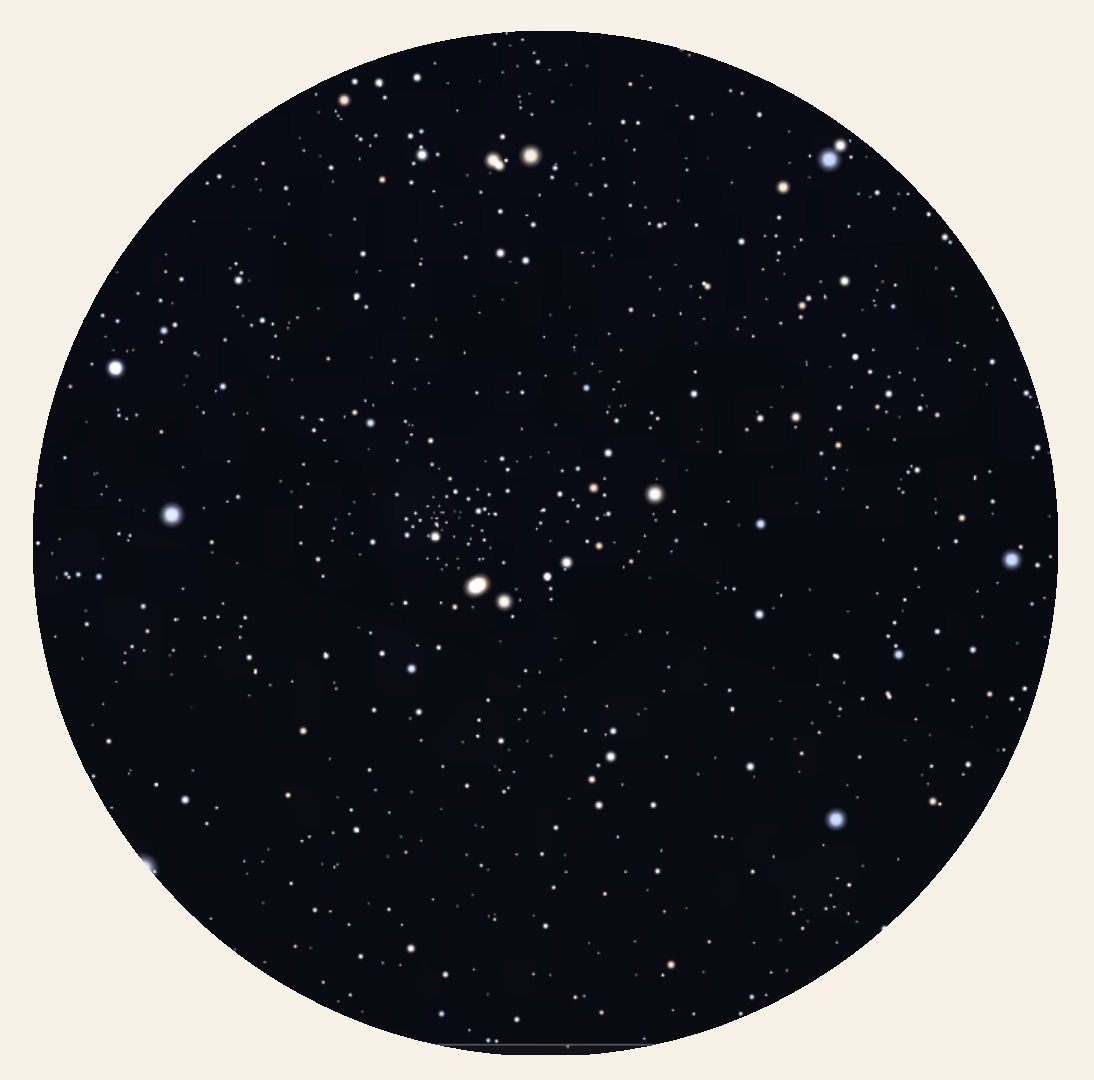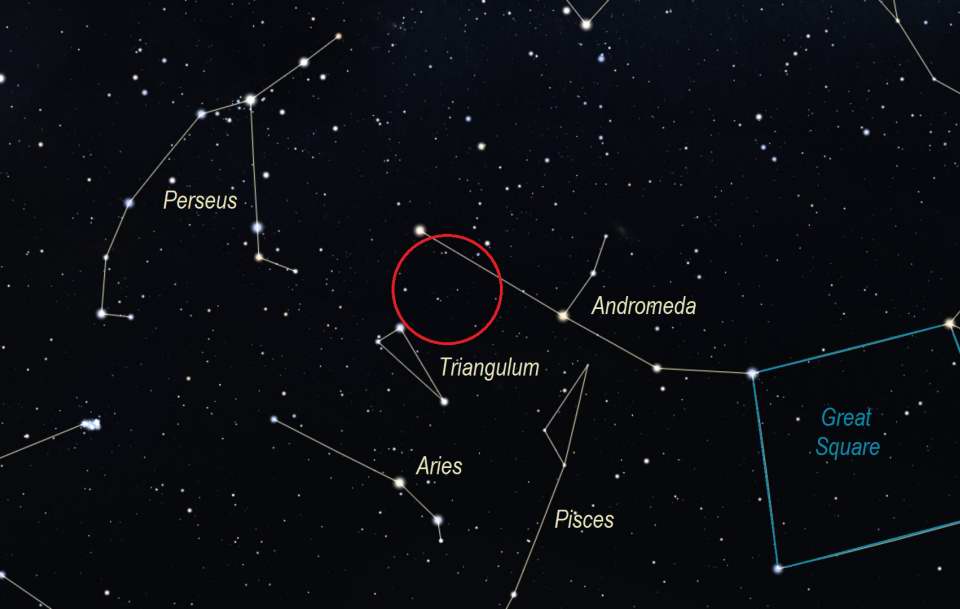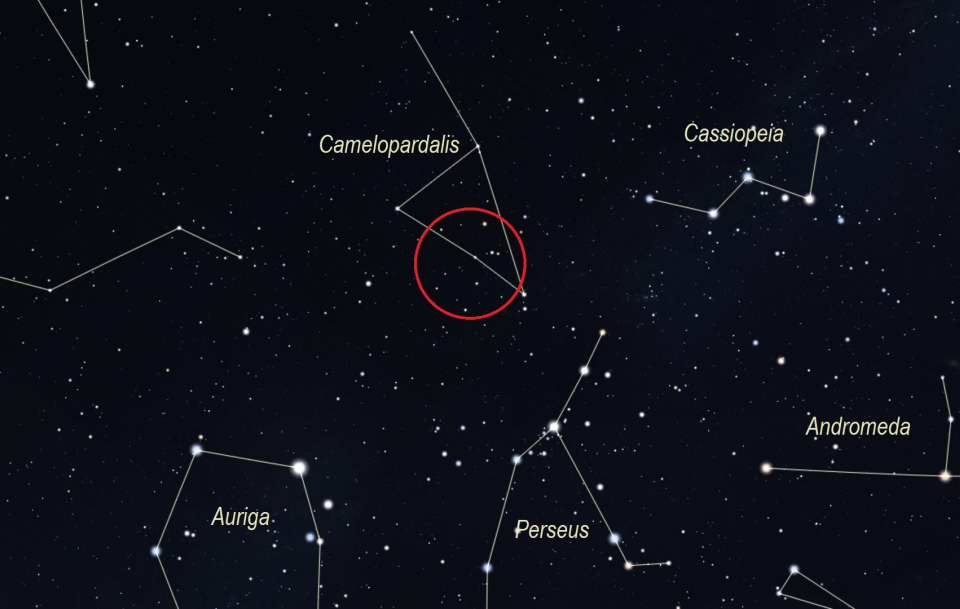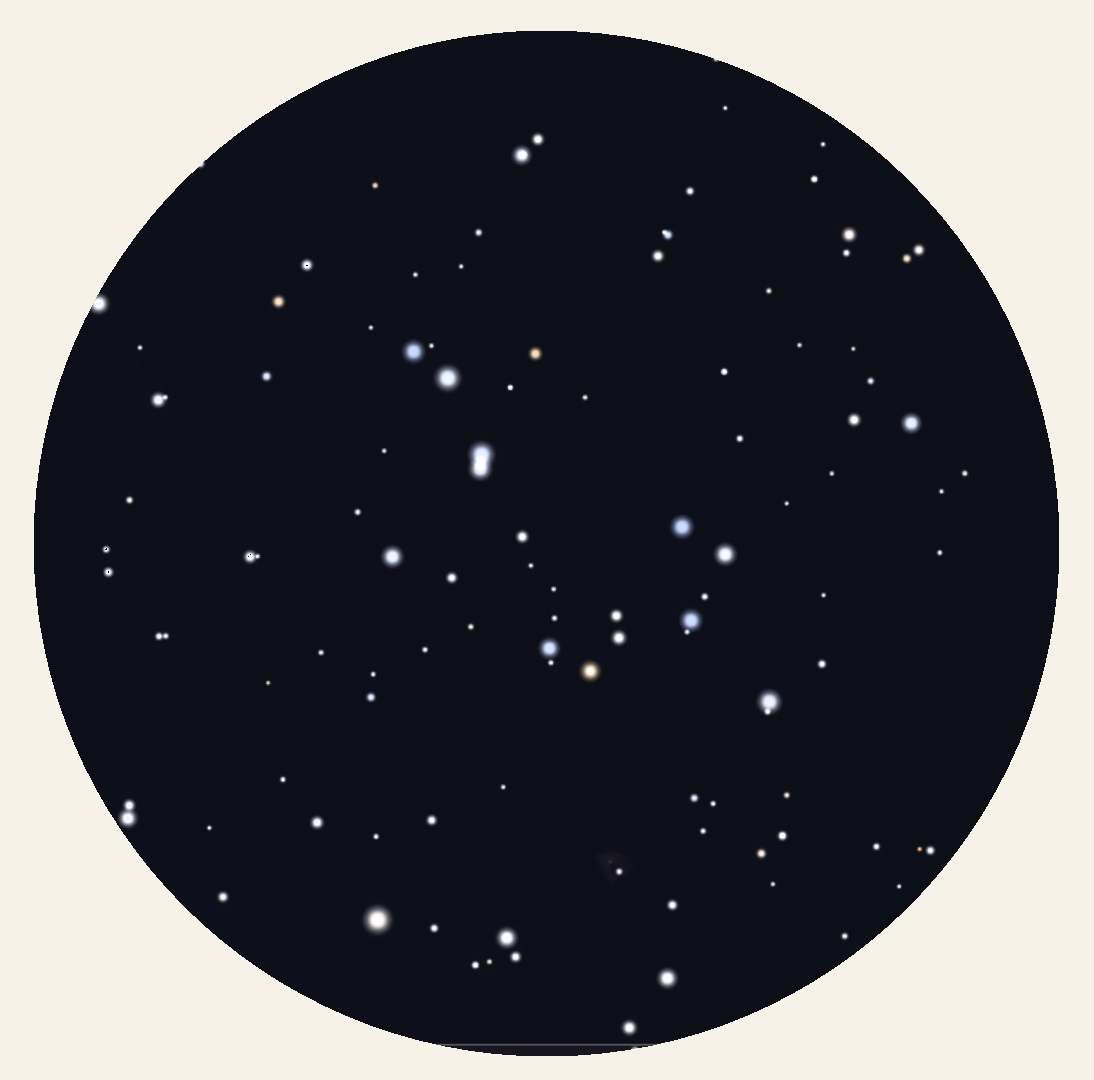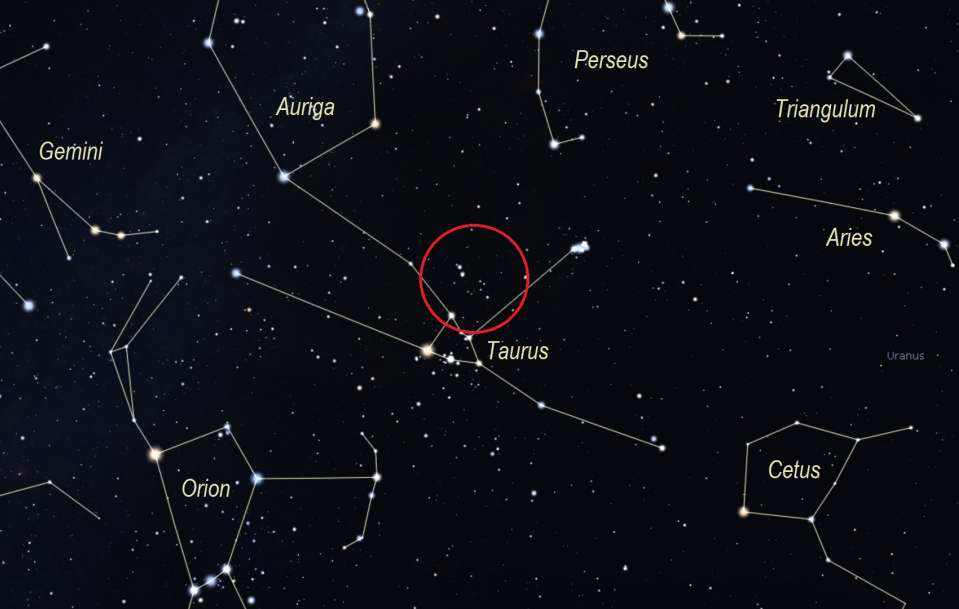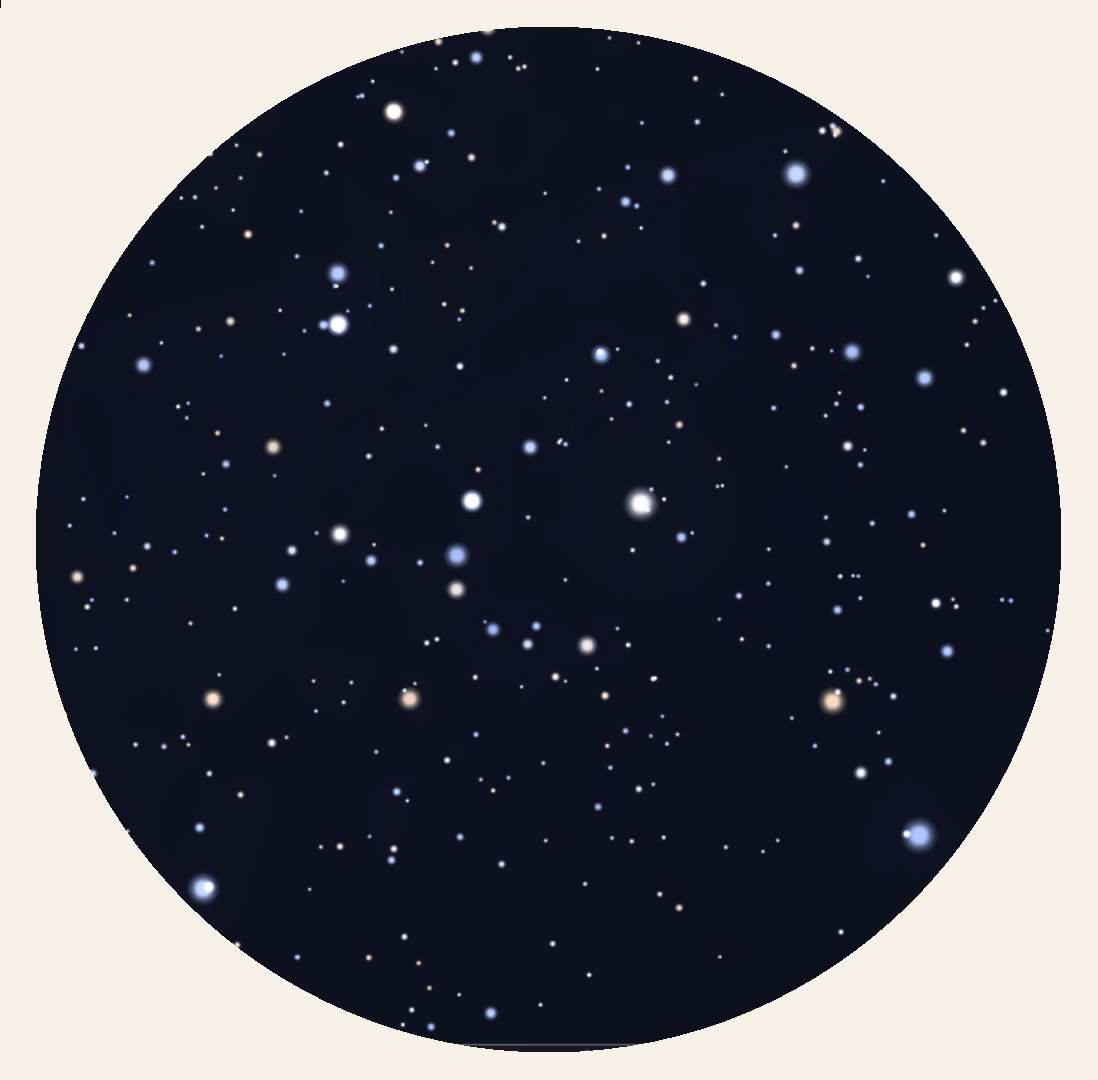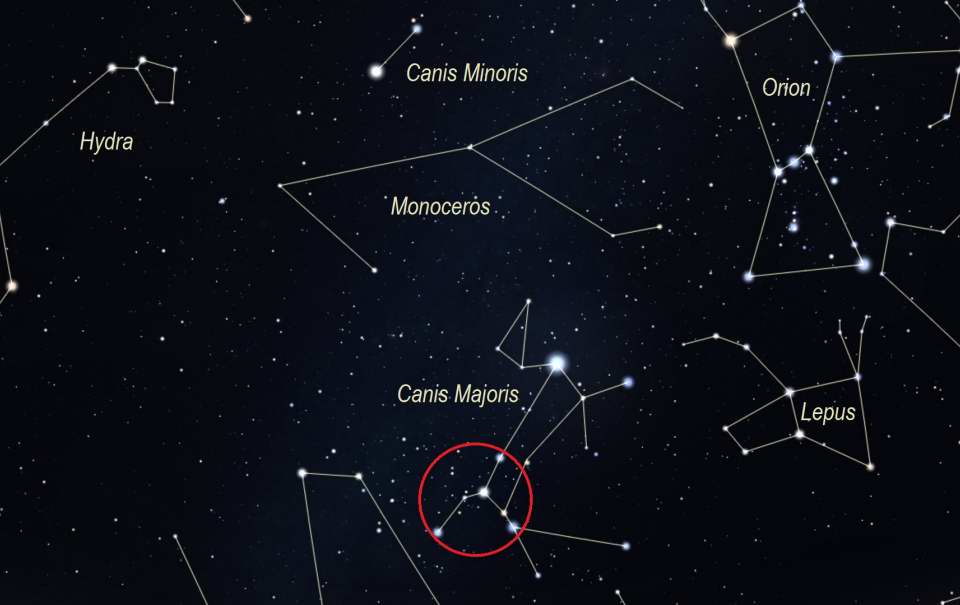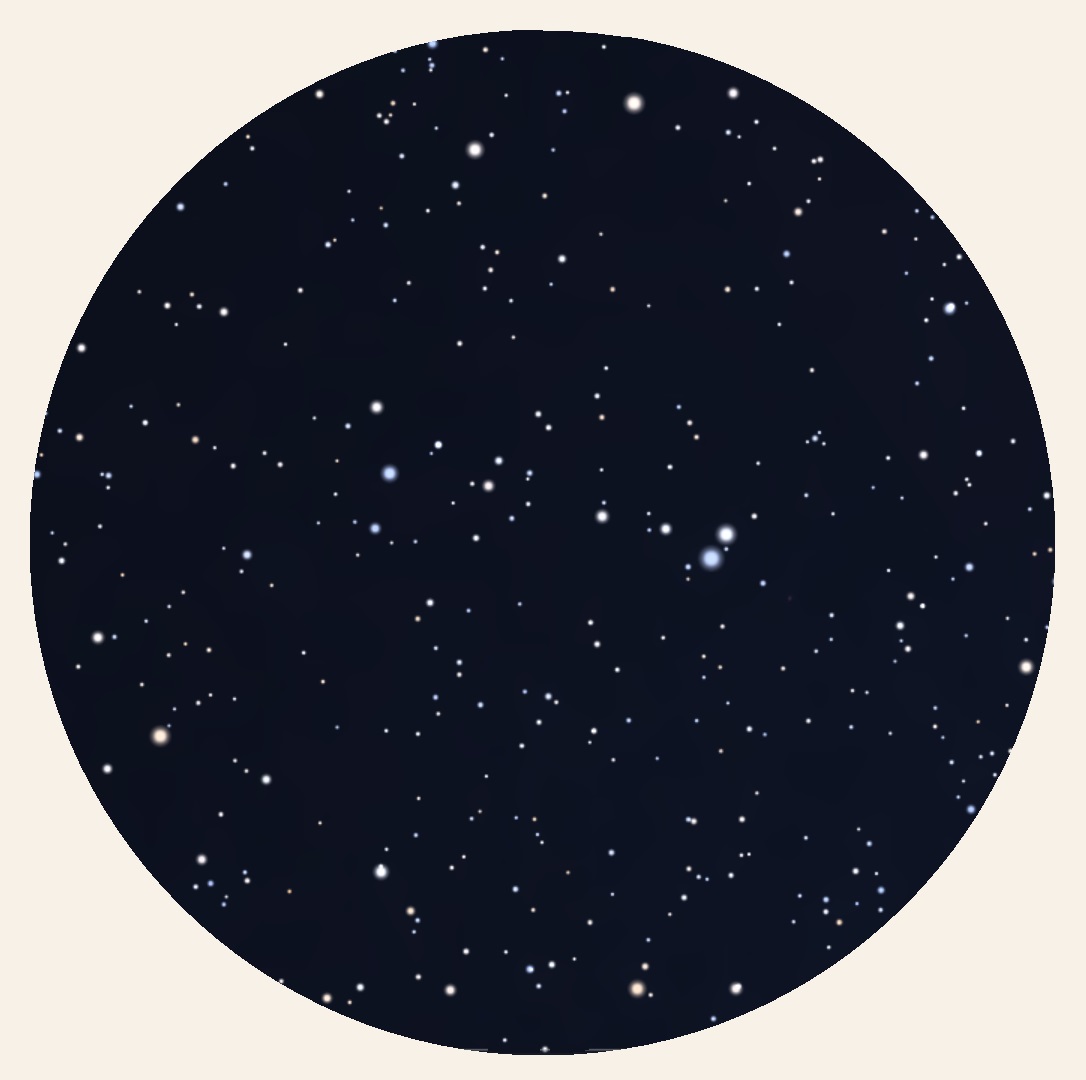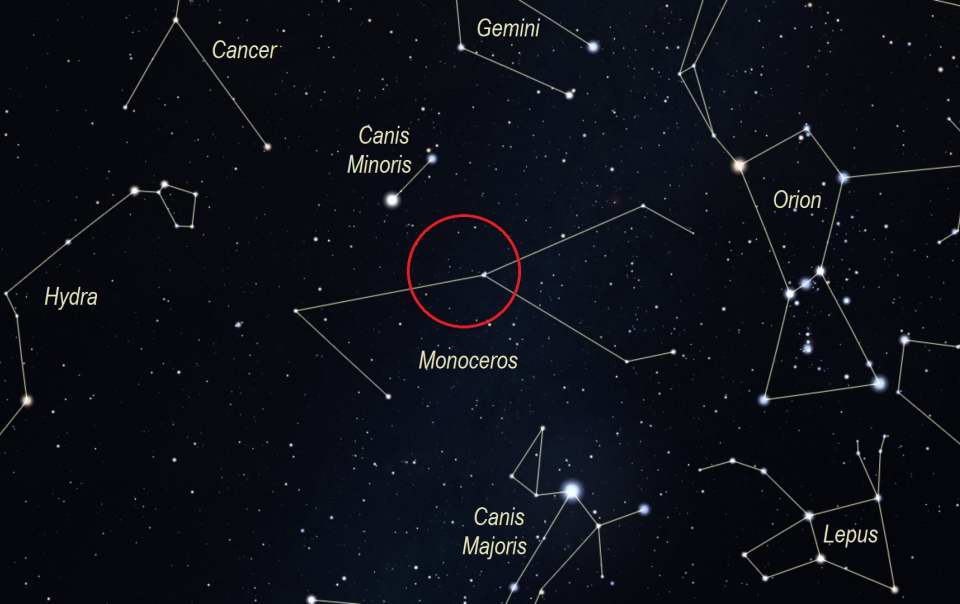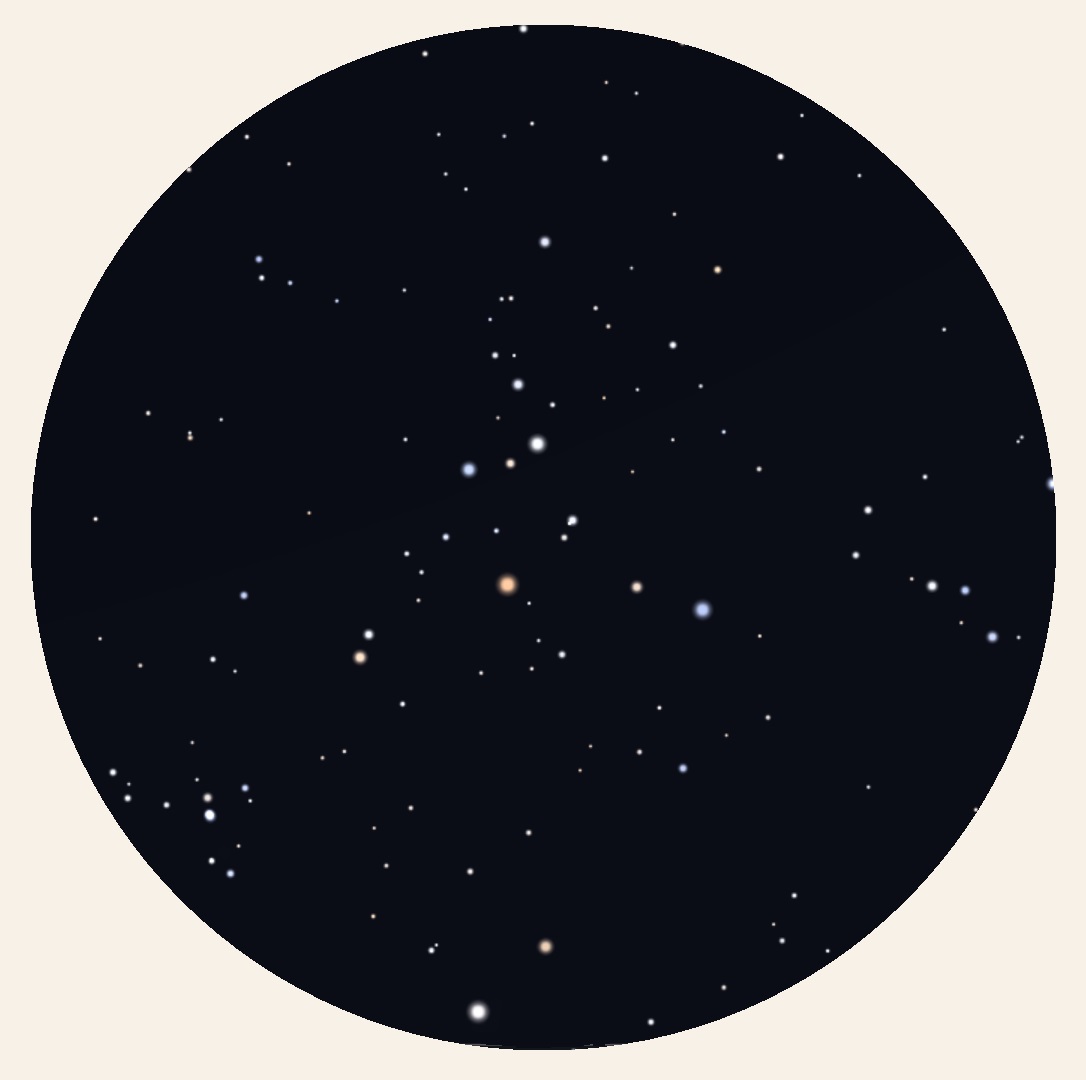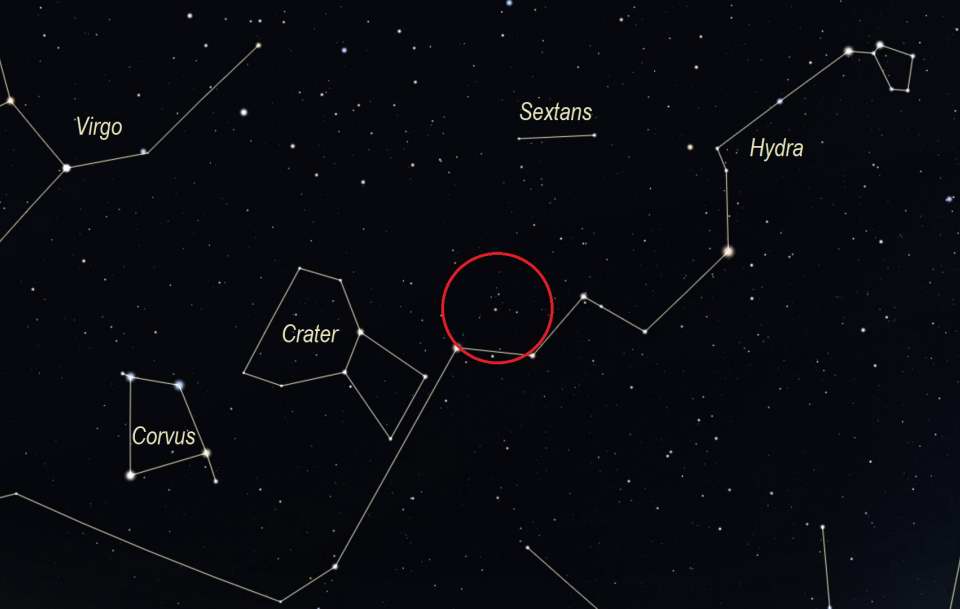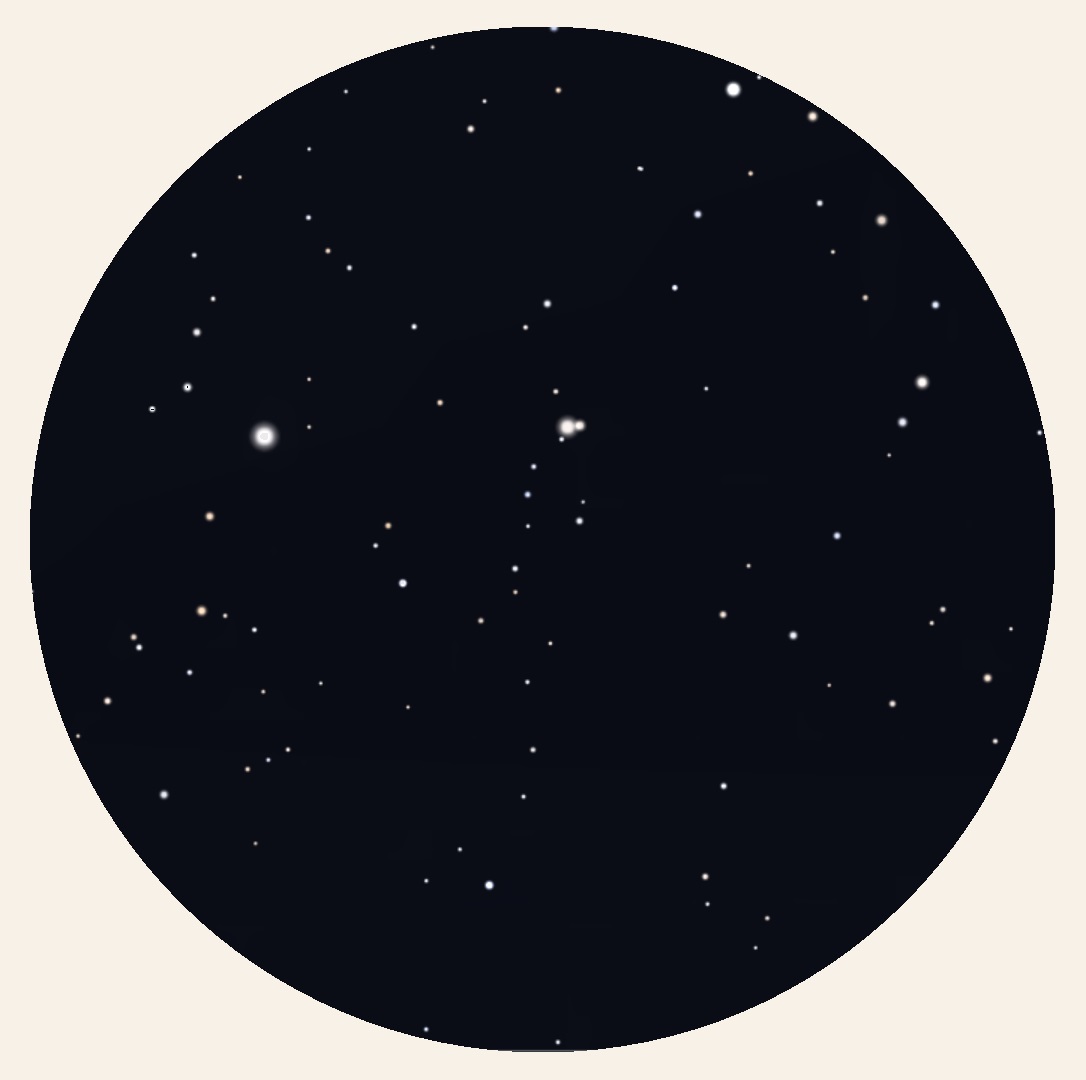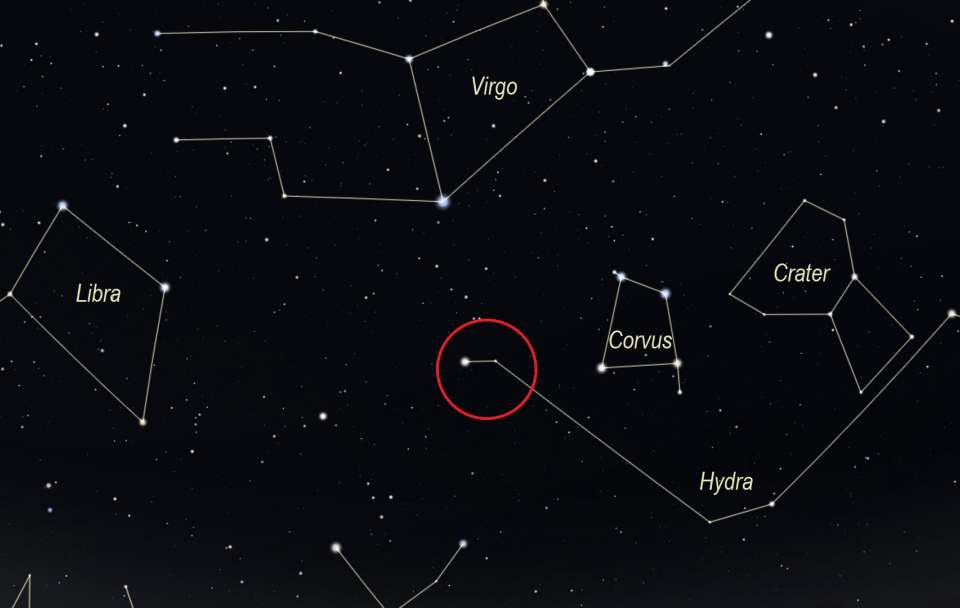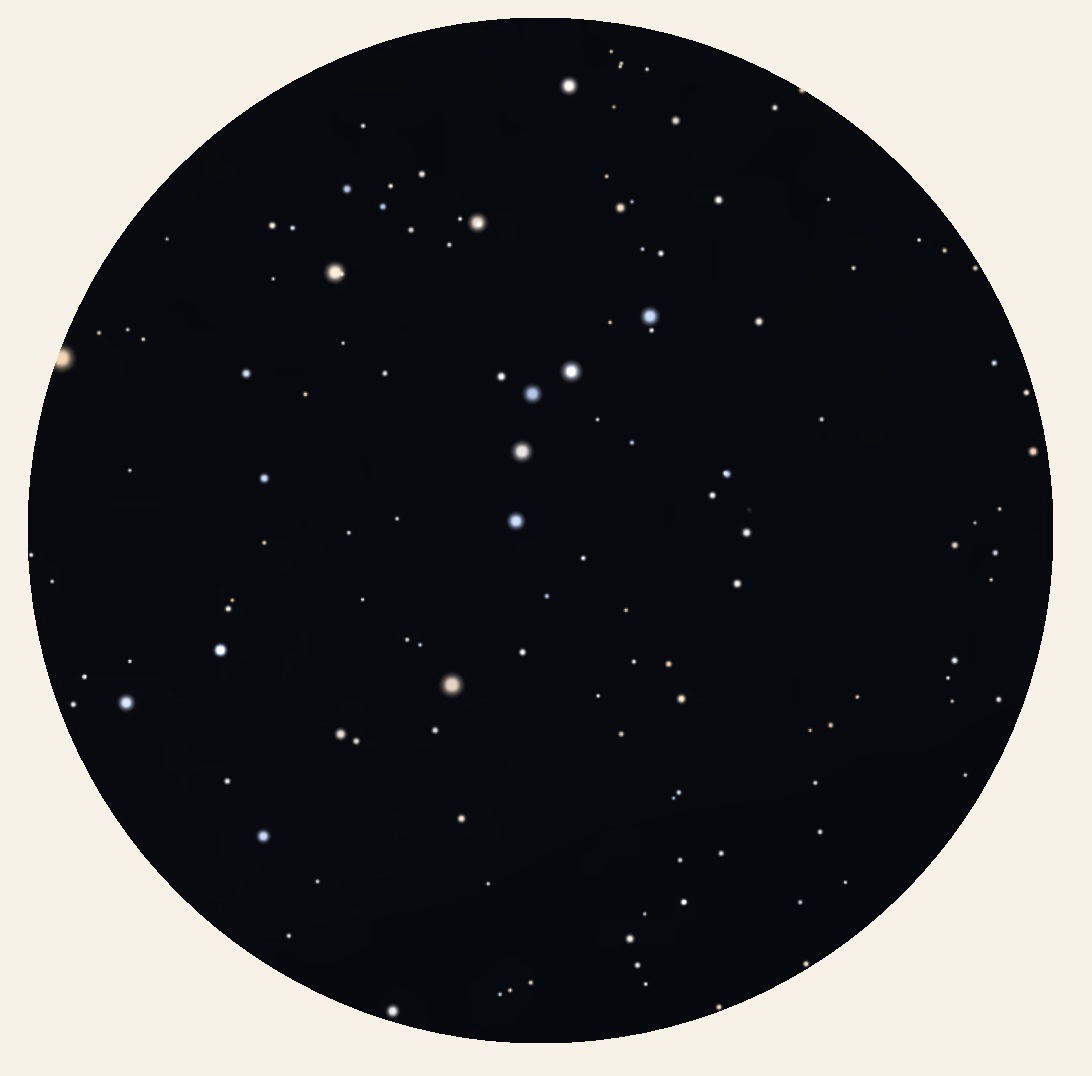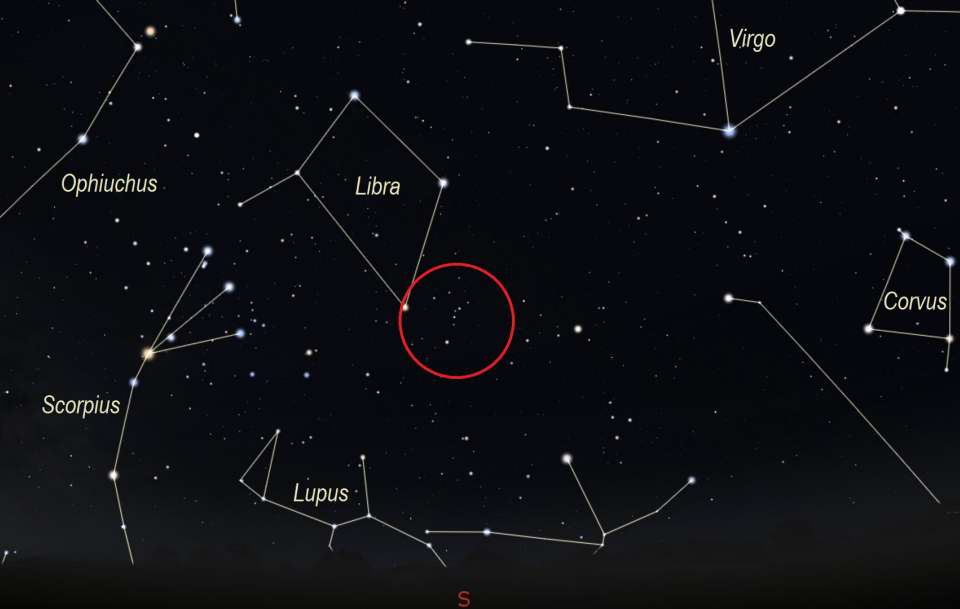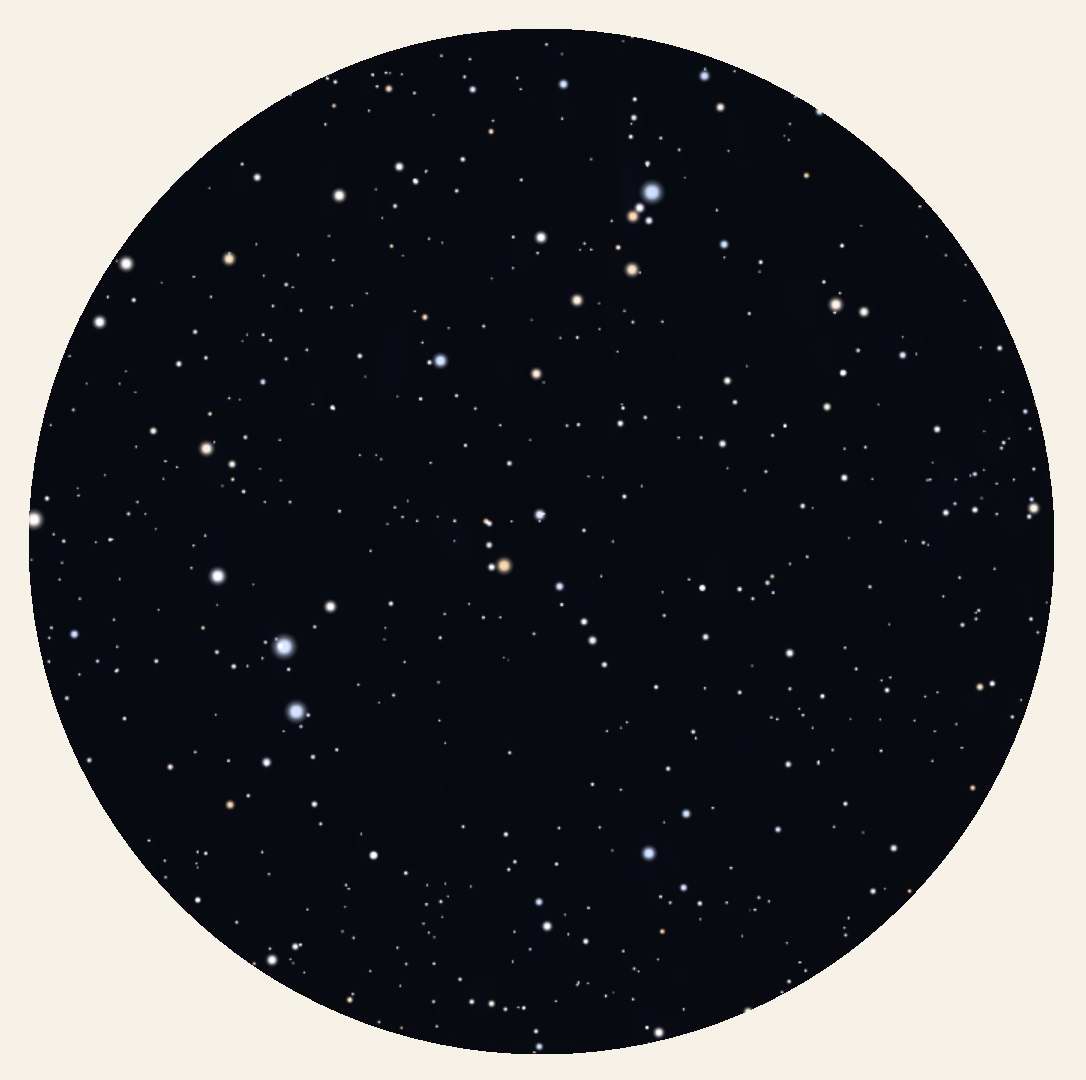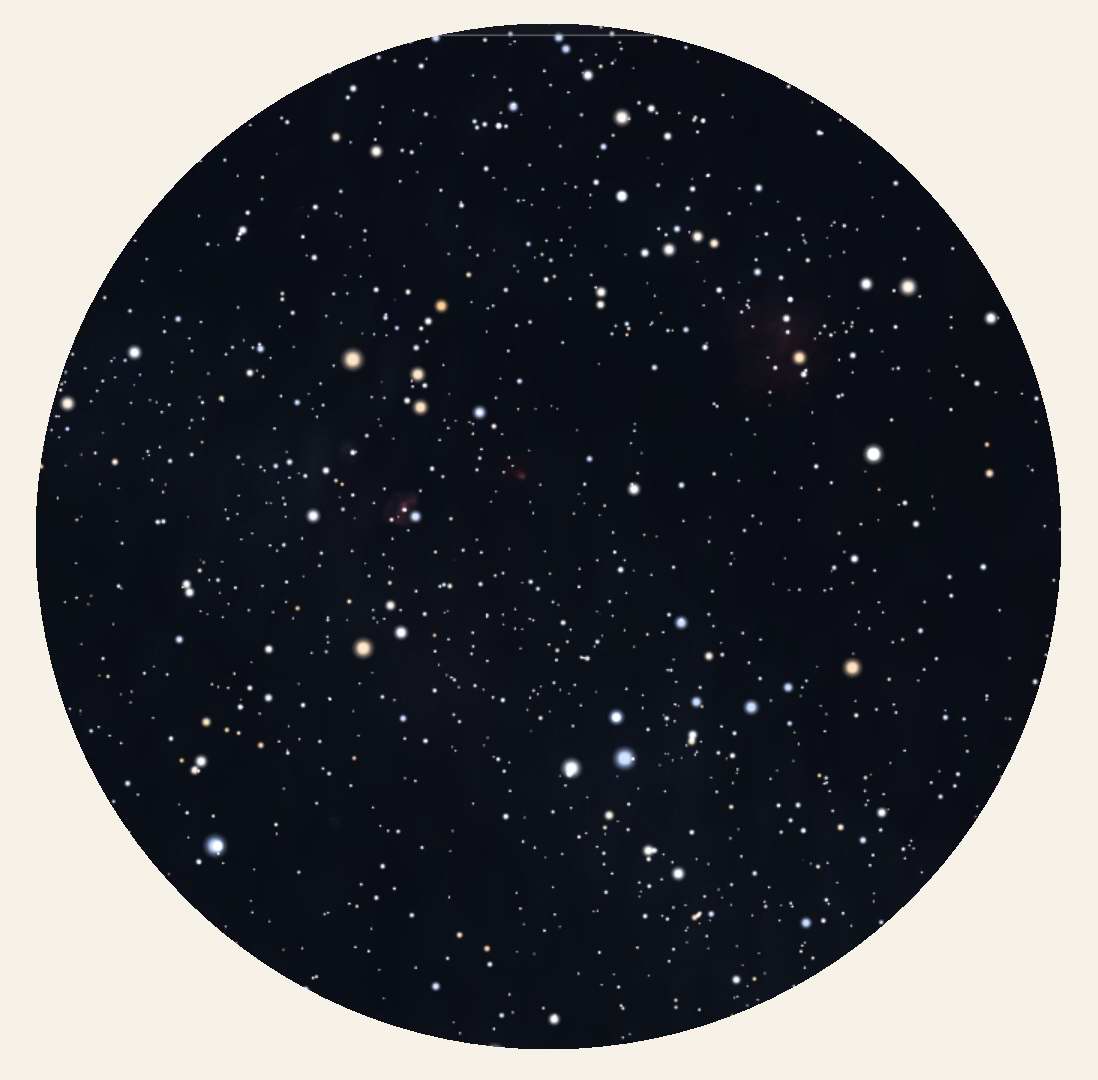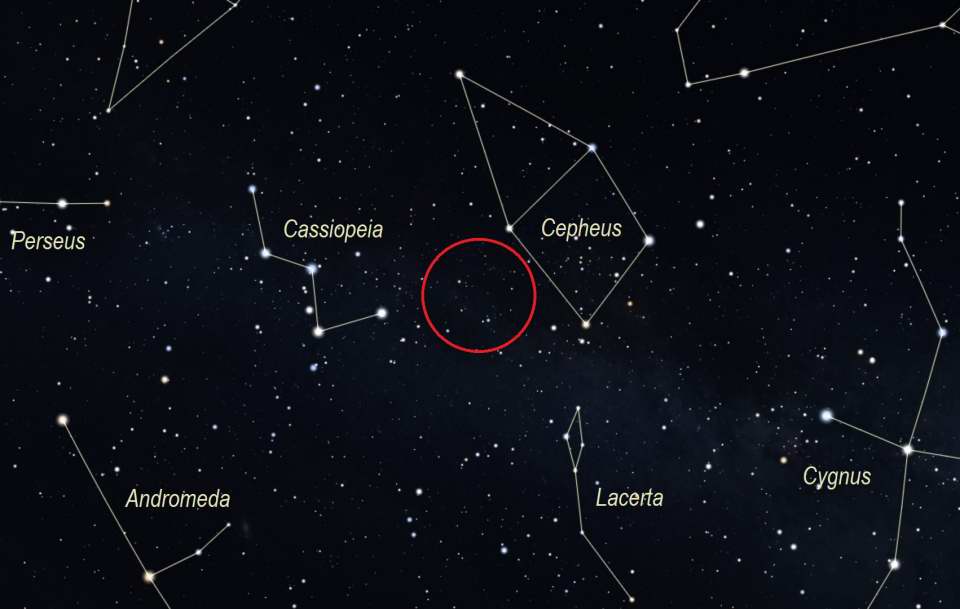Beginner's Guide
Binocular Asterisms
Though this page would not really be considered beginner material, there's no reason a beginner can't try finding these objects once you can basically navigate your way around the sky. We also hope that more experienced amateurs find this page if they're searching for asterisms to view. We present all of these with a simulated binocular view and a wide naked-eye sky view to show their position. Please note that because sky conditions are always variable (moonlight, light pollution, thin clouds, etc.) the simulated view will never exactly correspond.
Below we present 21 examples of asterisms best seen in binoculars. A couple are also naked-eye asterisms, but they are included here because we feel they are better viewed in binoculars. The simulated binocular view (about a 7.5° field) is on the left; the finder chart on the right. On all the charts North is up. All coordinates are epoch J2000.0 and as centered as possible in the asterism formation.
As is the case with all fainter celestial targets, some are easier to find then others. We'll start with the easier ones.
Dipper Bowl / Pleiades / M45
RA: 03h 47m, Dec: 24° 11m - The Dipper Bowl is the five brightest stars of the Pleiades.
"S" in Orion
RA: 05h 34m, Dec: -0° 46m
Job's Coffin / Mini Kite
RA: 20h 42m, Dec: 15° 23m - Formed by the four brightest stars of Delphinus, α, β, γ, and δ Dephini shown with the blue lines. If you include η, ε and κ Delphini (the pink lines), it can be alternatively viewed as the Mini Kite.
Little Cassiopeia
RA: 22h 25m, Dec: 49° 29m - Formed by five stars from the constellation Vulpecula. The brightest is magnitude 3.7 and the faintest 4.5. Because it's both fairly small and relatively faint, it makes for a better binocular asterism.
Frederick's Glory
RA: 23h 40m, Dec: 45° 27m - Proposed as a constellation separate from Andromeda in 1787 to honor Frederick the Great, the king of Prussia who had died in the previous year. You can read more about it here. It is no longer in use (outside of being an asterism) and today it is entirely part of Andromeda.
Northern Fly
RA: 2h 46m, Dec: 28° 03m - Musca Borealis (Latin for Northern Fly) was once a constellation, but is now simply part of Aries. It is formed by the stars 33, 35, 39, 41 Arietis.
Herman's Cross
RA: 19h 57m, Dec: -26° 44m - A cross formed by four stars: ω, 59, 62, and 60 Sagittarii.
Coathanger
RA: 19h 26m, Dec: 20° 06m - The Coathanger is part of Brocchi's Cluster (aka Collinder 399, Cr 399 or Al Sufi's Cluster) which is in the constellation of Vulpecula near the border with Sagitta. Especially if viewed upside down, there is little question as to why it's named the Coathanger.
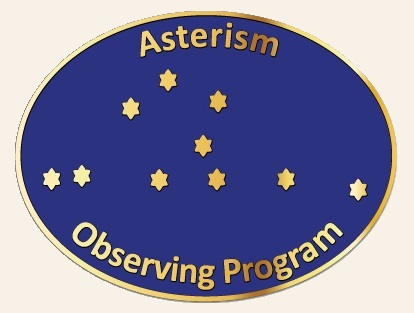 Many consider this to be the best binocular or telescopic asterisms and one of them is the Astronomical League.
The image at the right is the award pin for their
Asterism Observing Program which
uses the coathanger as its symbol.
Even if you're not interested in earning the award, if you have any interest in asterisms we encourage you to check out this page. They
have a listing of 112 naked-eye, binocular, and telescope asterisms.
Many consider this to be the best binocular or telescopic asterisms and one of them is the Astronomical League.
The image at the right is the award pin for their
Asterism Observing Program which
uses the coathanger as its symbol.
Even if you're not interested in earning the award, if you have any interest in asterisms we encourage you to check out this page. They
have a listing of 112 naked-eye, binocular, and telescope asterisms.
Question Mark
RA: 2h 36m, Dec: 6° 53m - An unmistakeable asterism in the constellation Cetus.
Home Plate
RA: 0h 08m, Dec: 40° 35m - This asterism field is located just west of M31 (Andromeda Galaxy) which is very conspicuous in binoculars. With a binocular FOV of 7.5° you can just barely put Home Plate and M31 in the same field.
Golf Putter
RA: 1h 52m, Dec: 37° 26m - Located in Andromeda, it is a ine of stars with two brighter ones for the club head. NGC 752 is the ball.
Kemble's Cascade
RA: 4h 00m, Dec: 62° 46m - Kemble's Cascade (also Kemble 1) is located in the constellation Camelopardalis. It is a fairly straight line of more than 20 5th to 10th magnitude stars over a distance of about 2.5 degrees. It appears to flow into the open cluster NGC 1502. It is named for Father Lucian Kemble. Read more about this asterism on Wikipedia.
Davis' Dog
 RA: 4h 22m, Dec: 21° 31m - This asterism for Massachusetts observer John Davis who spotted the "Dog" in this star field. Some might
quibble that this is not really an asterism because the star field is not obvious, so don't feel bad if you can't see this one. At the right is
a diagram of this field showing the "constellation" lines. You can see a larger view by
clicking/tapping here or on the image. Do you think this dog is pretty
skinny? You're not alone. The usual explanation is that this dog is a Dachshund,
but with the long tail you might go with a coyote or fox.
RA: 4h 22m, Dec: 21° 31m - This asterism for Massachusetts observer John Davis who spotted the "Dog" in this star field. Some might
quibble that this is not really an asterism because the star field is not obvious, so don't feel bad if you can't see this one. At the right is
a diagram of this field showing the "constellation" lines. You can see a larger view by
clicking/tapping here or on the image. Do you think this dog is pretty
skinny? You're not alone. The usual explanation is that this dog is a Dachshund,
but with the long tail you might go with a coyote or fox.
Boomerang
RA: 7h 13m, Dec: -26° 42m
Star Gun
RA: 7h 16m, Dec: -0° 01m
Fly and Fly Swatter
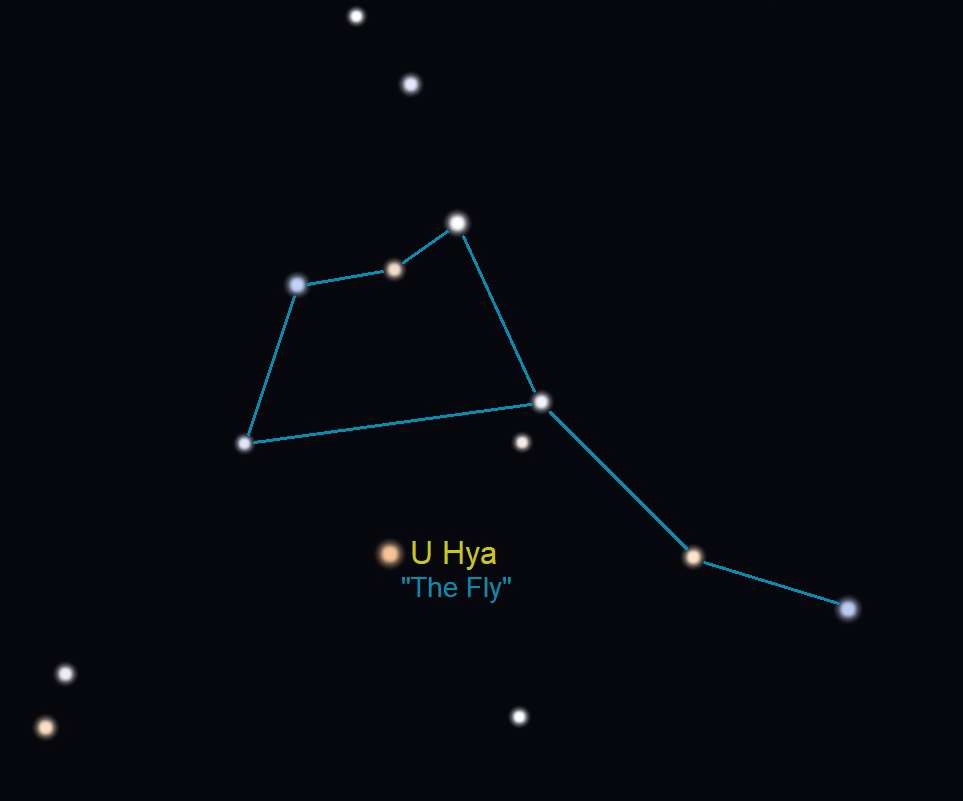 RA: 10h 37m, Dec: -12° 48m
RA: 10h 37m, Dec: -12° 48m
The Fly and Fly Swatter asterism is composed of 5 stars make the swatter and 3 stars for the handle.
The star U Hydrae is the fly about to be zapped by the flyswatter.
U Hydrae is a
carbon star which varies between
magnitude 4.7 to 5.2. It is one of the reddest stars in the sky.
Sea Horse
RA: 13h 11m, Dec: -23° 56m
Baby Scorpion
RA: 14h 48m, Dec: -26° 39m
Kemble's Kite
RA: 3h 25m, Dec: 71° 41m - This is another asterism named for Father Lucian Kemble who was the first to describe it.
Lucky 7 and the Airplane
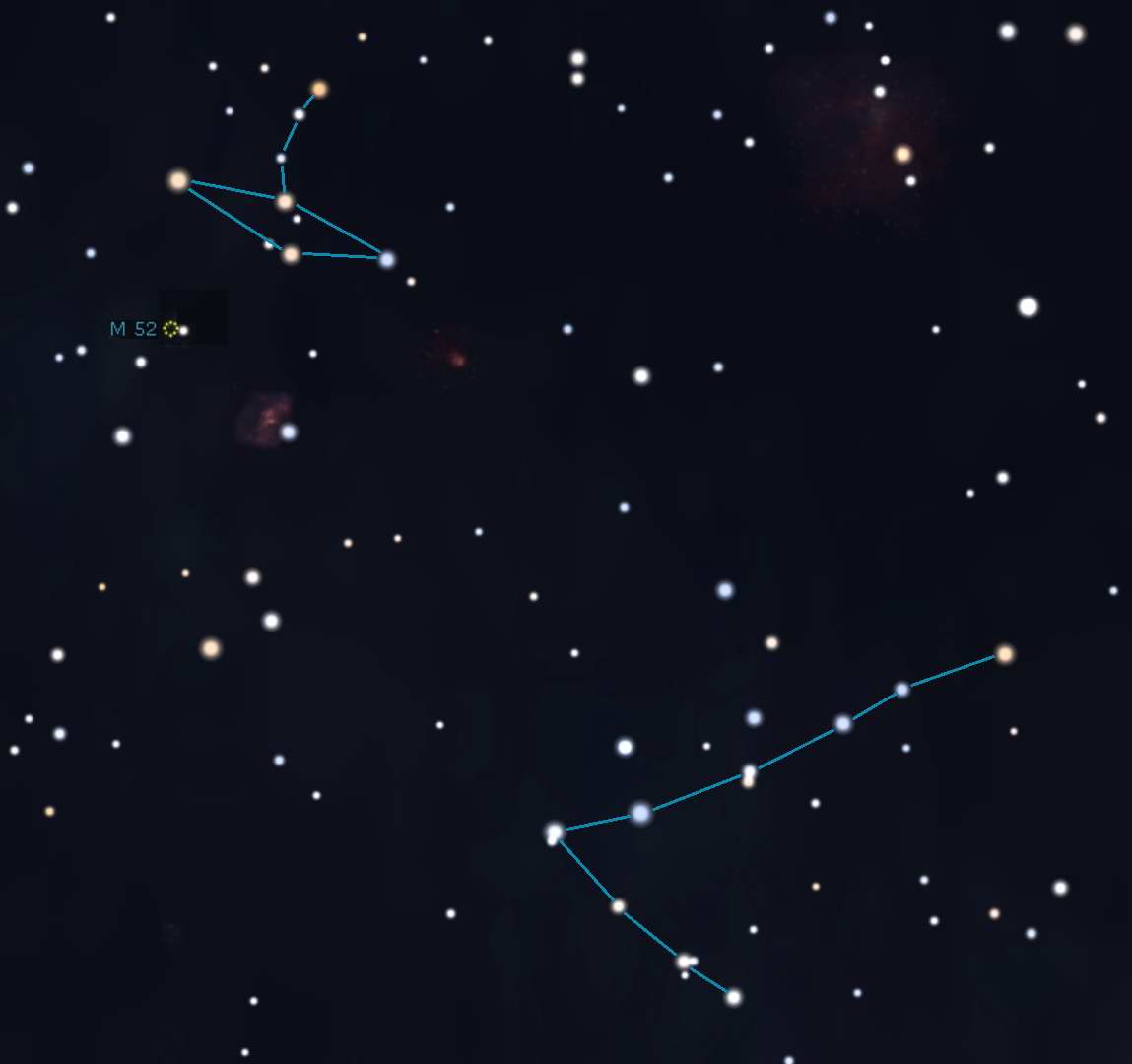 Lucky 7 RA: 13h 11m, Dec: 59° 33m
Lucky 7 RA: 13h 11m, Dec: 59° 33m
Airplane RA: 13h 21m, Dec: 62° 13m
This field is located in Cassiopeia and fairly close to M52, an open star cluster which is really a telescopic object. Though
the Lucky 7 figure is easy to make out, the Airplane may not be. At the right are asterism figures for these asterisms and shows
the position of M52. Do you agree with the Airplane? Alternatively, it can be also viewed as a dragonfly or swan.
If you're interested, click/tap here of a great list of binocular and small telescope asterisms by David Ratledge.
Click/Tap here to go to our Naked-Eye Asterisms page.

